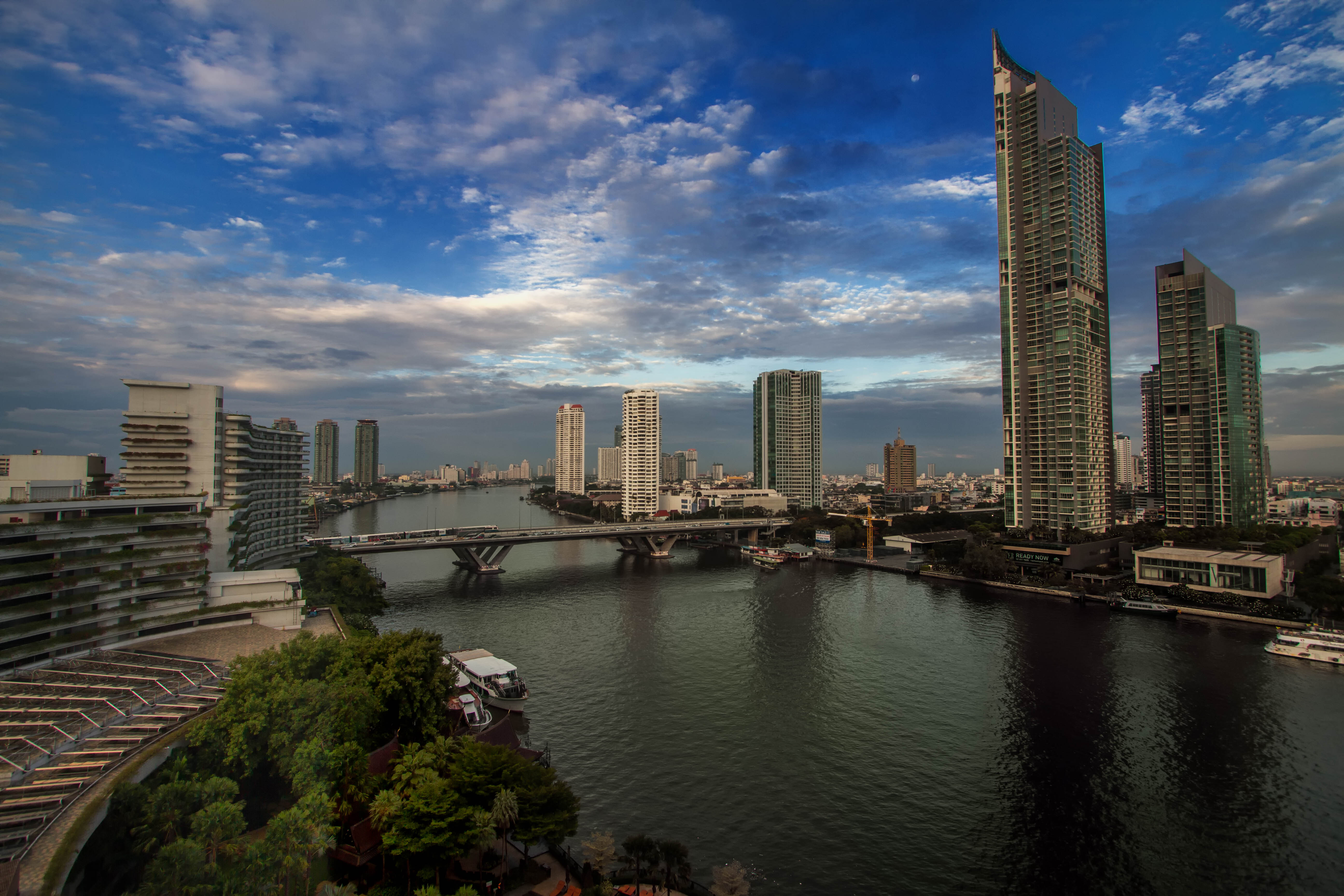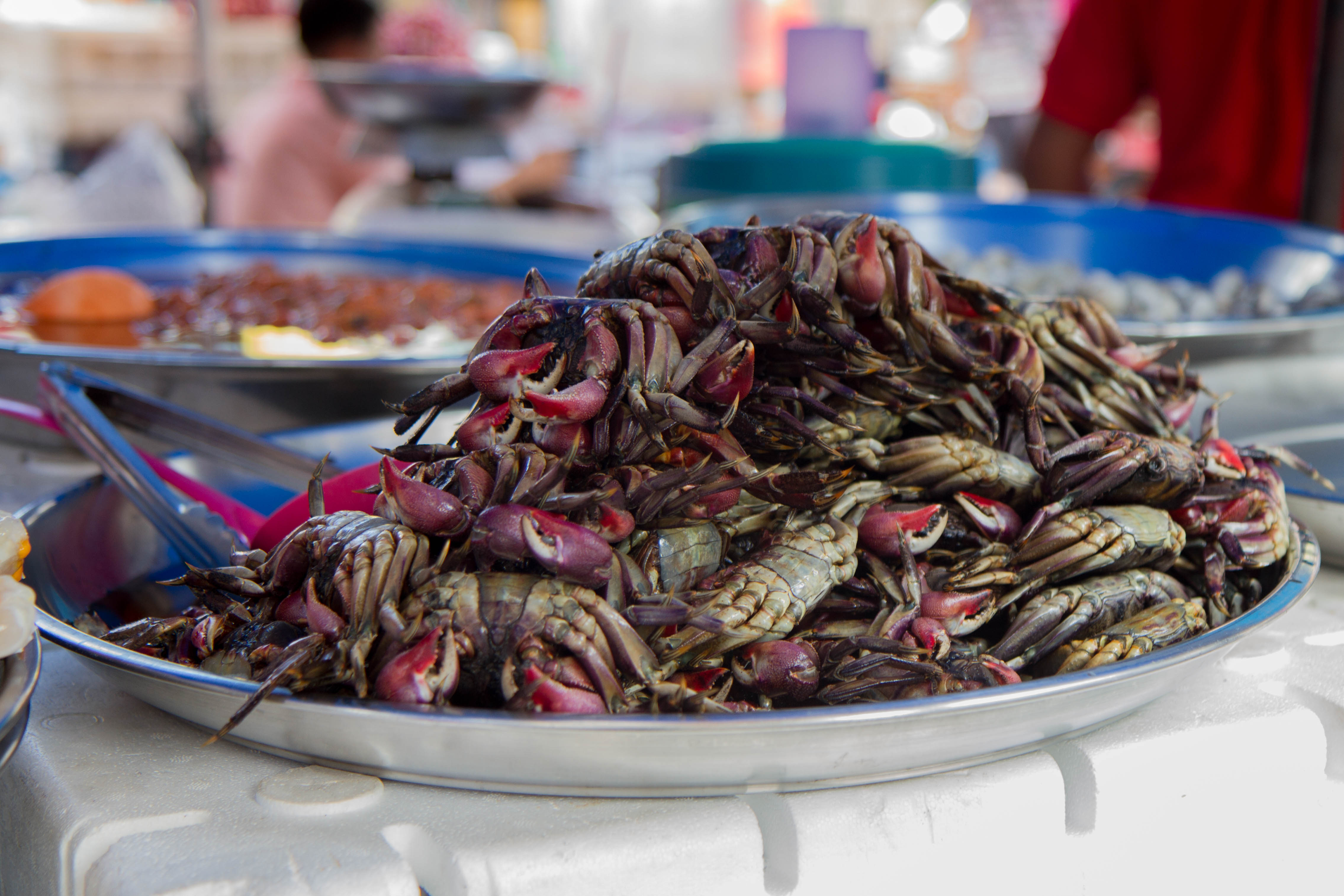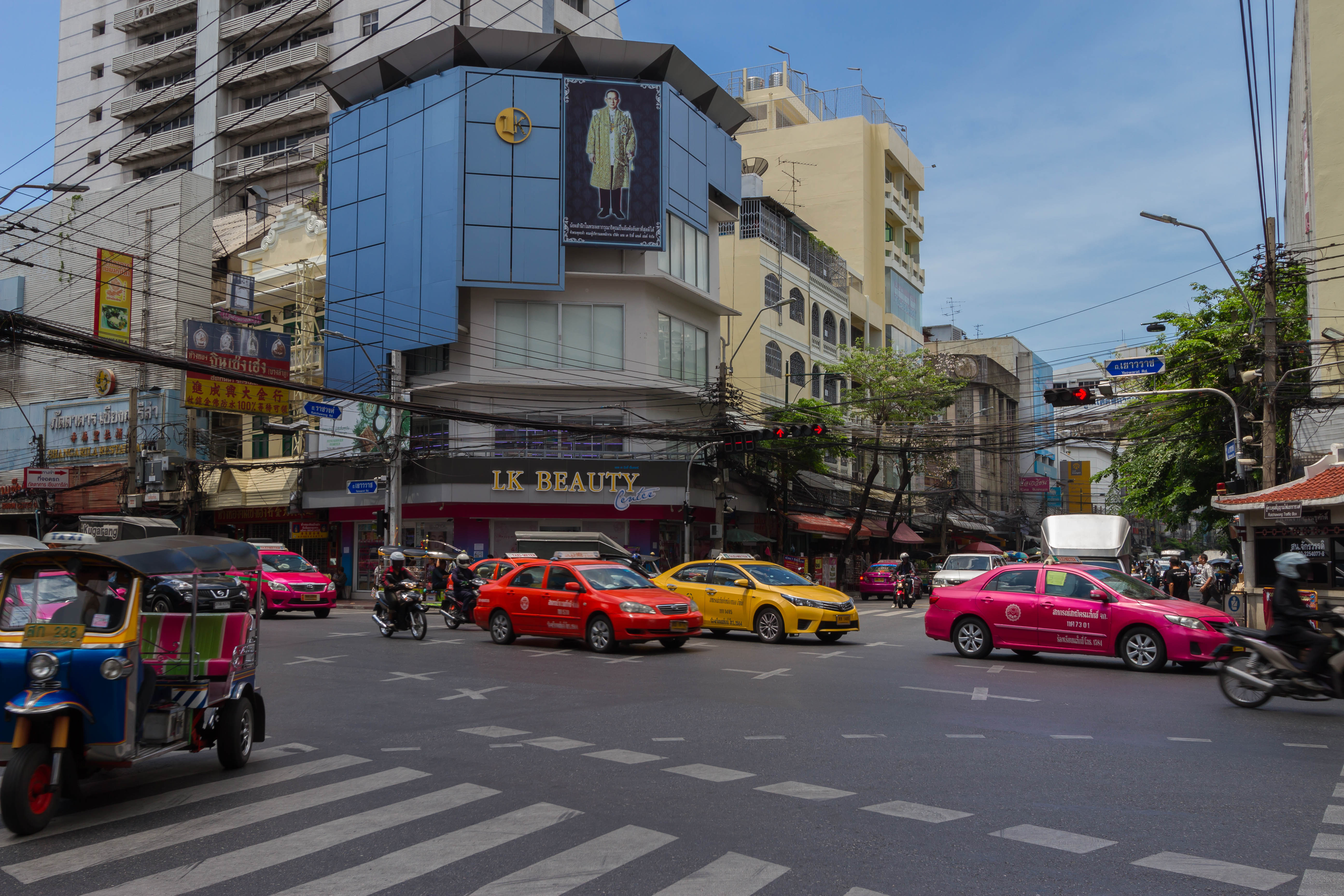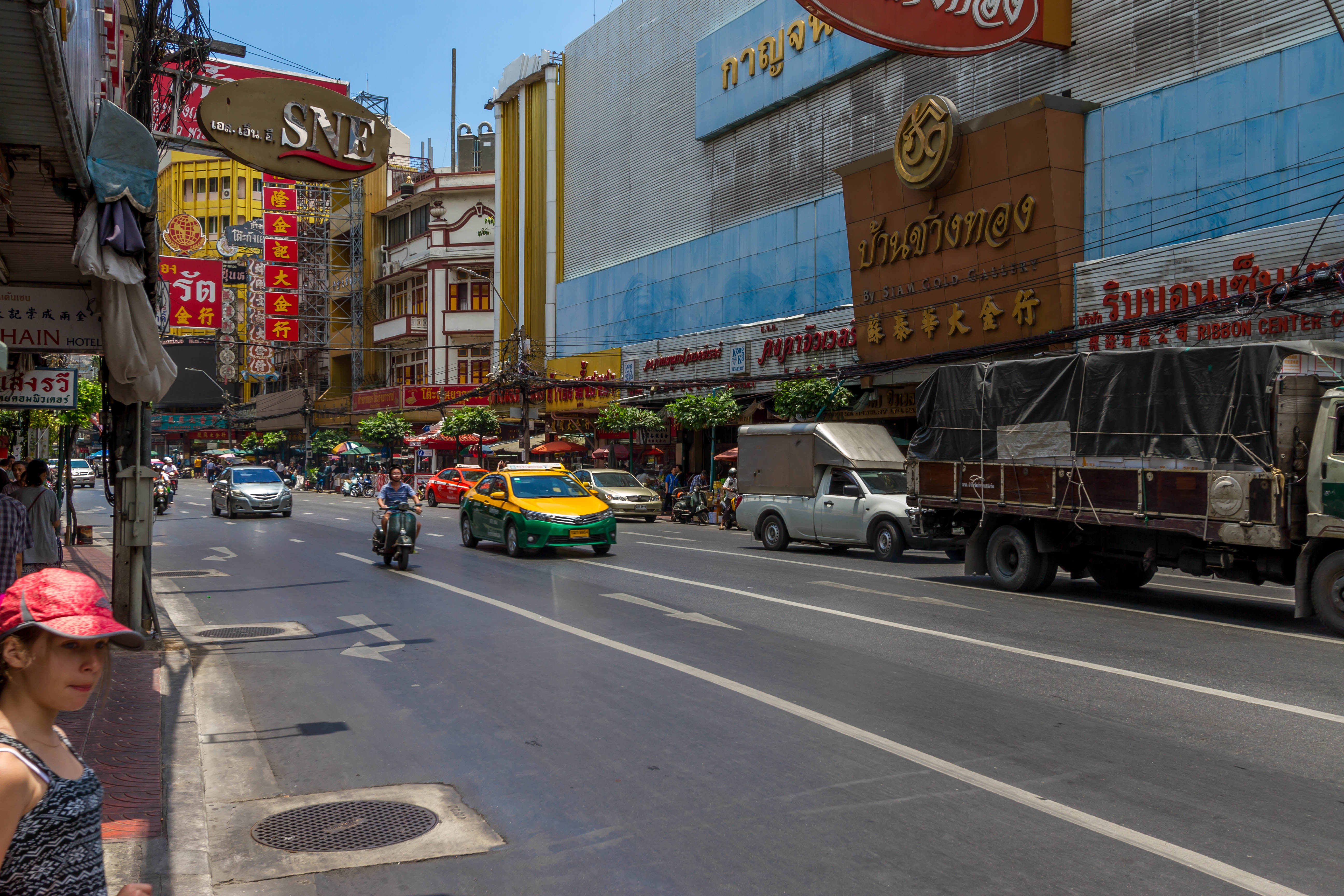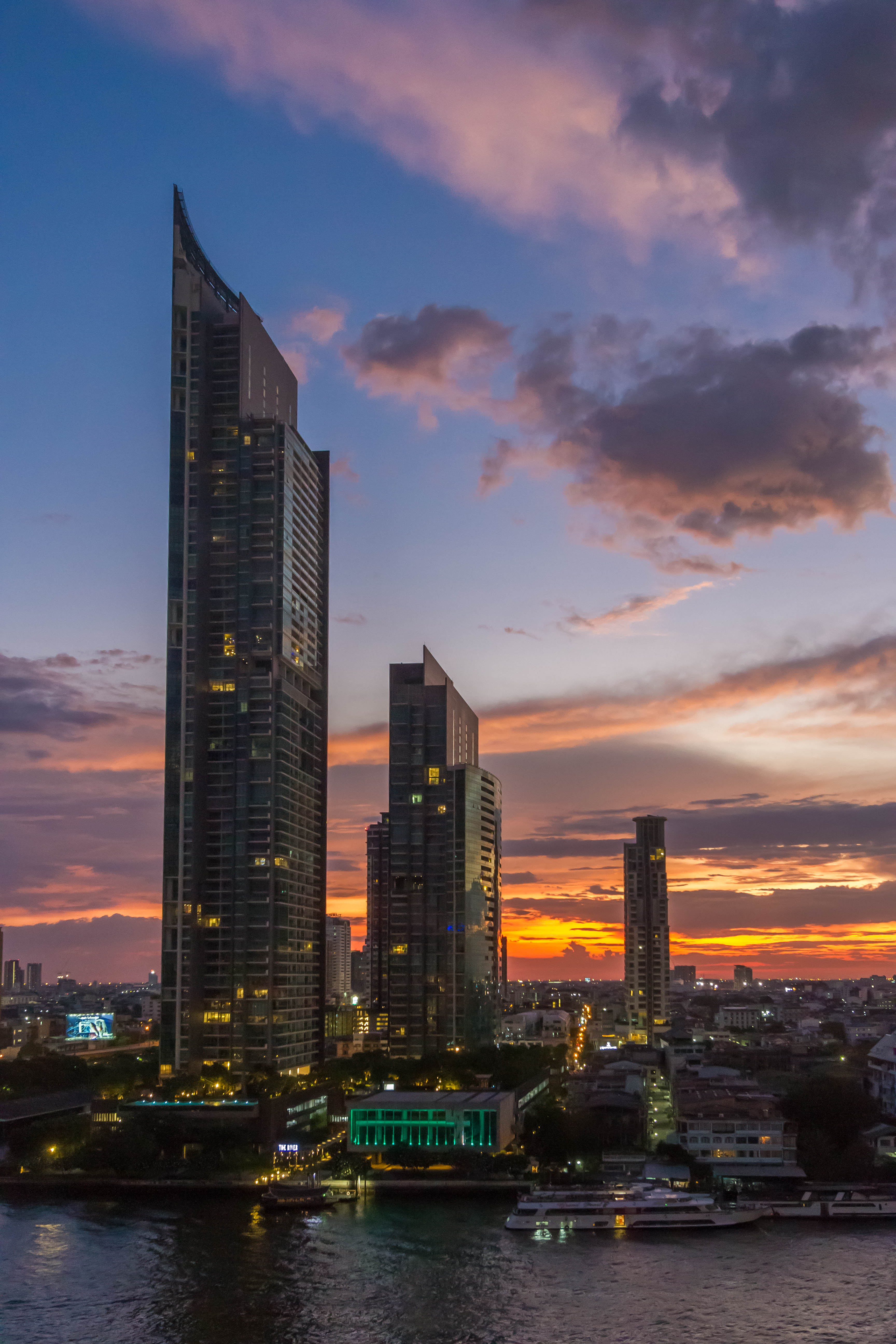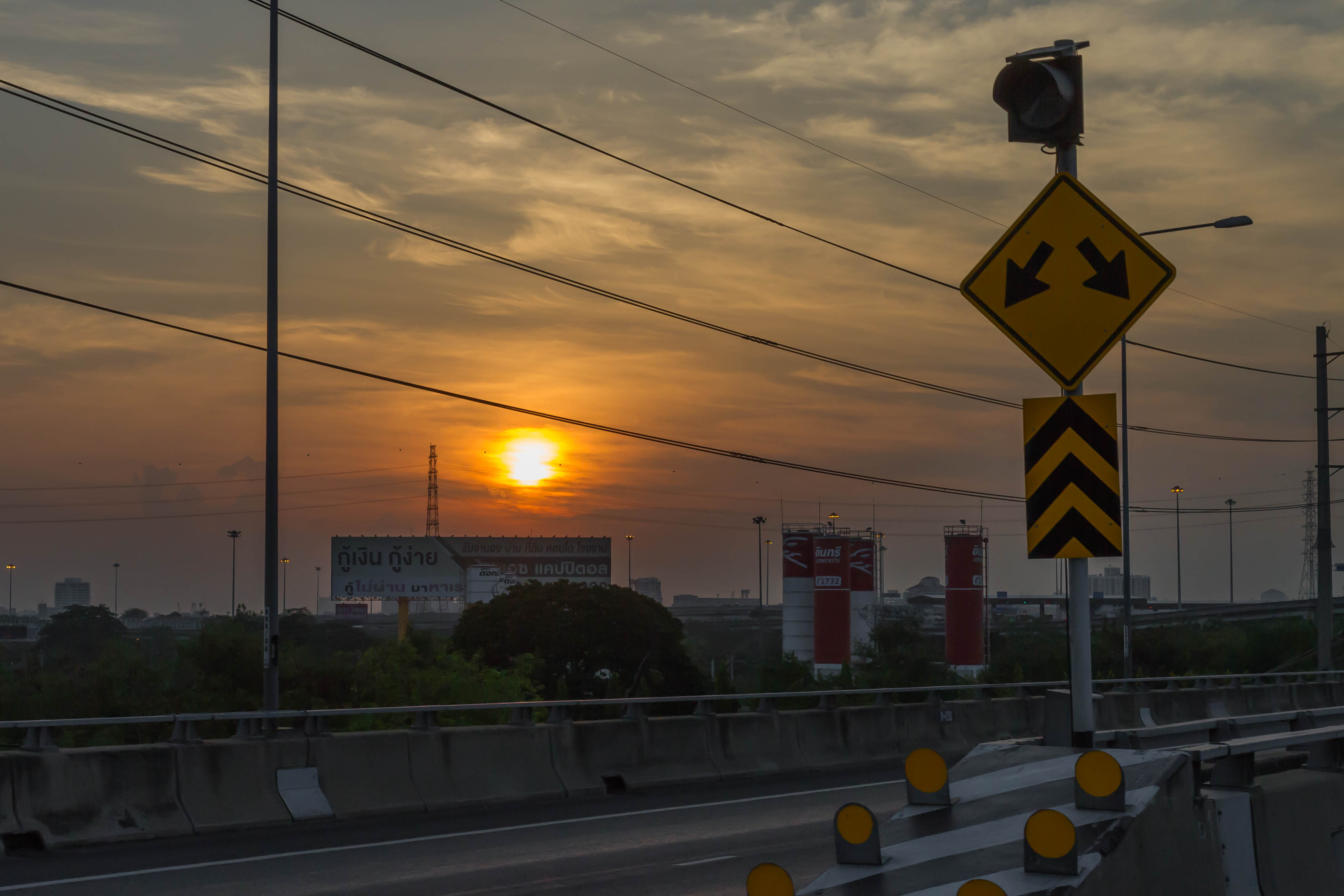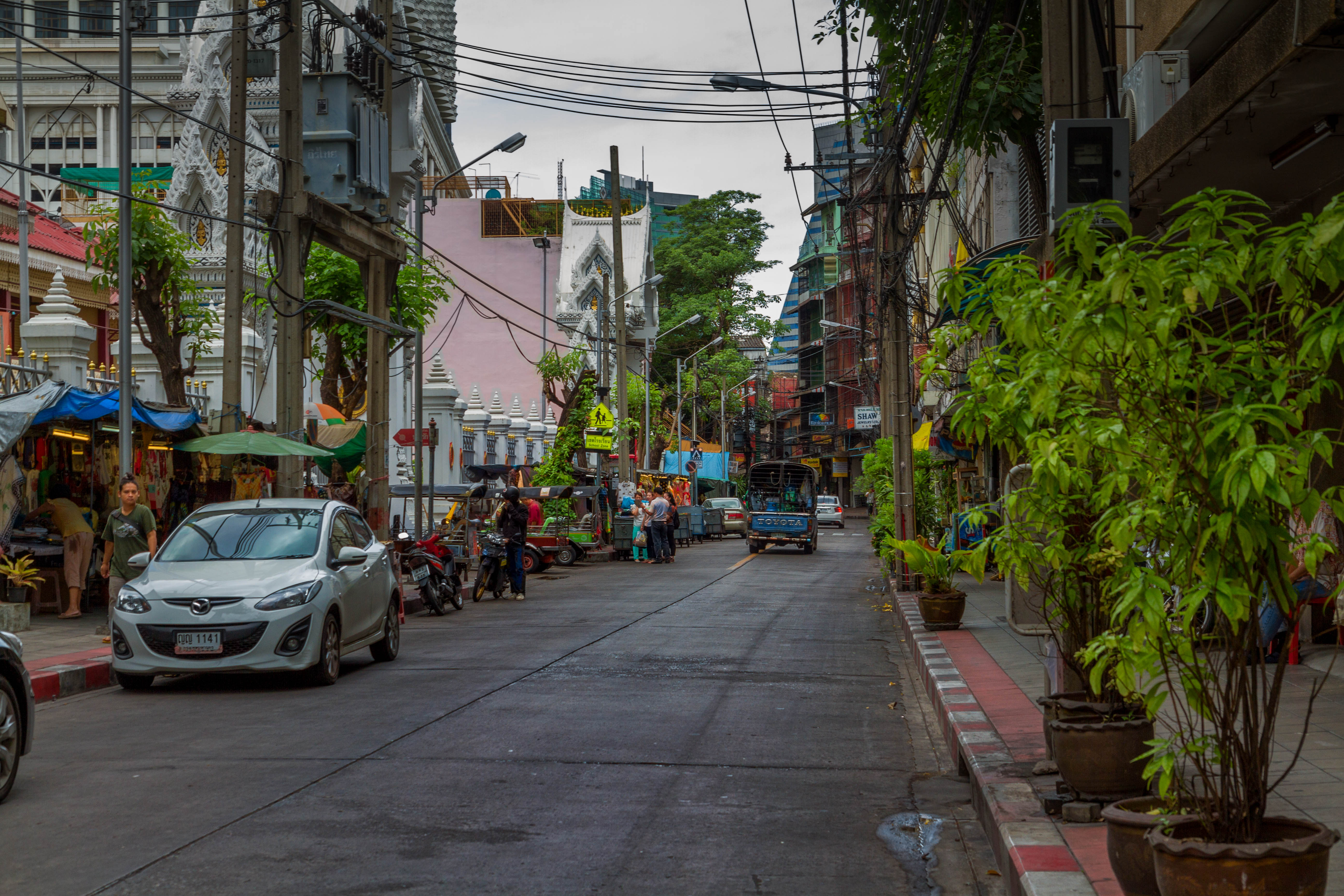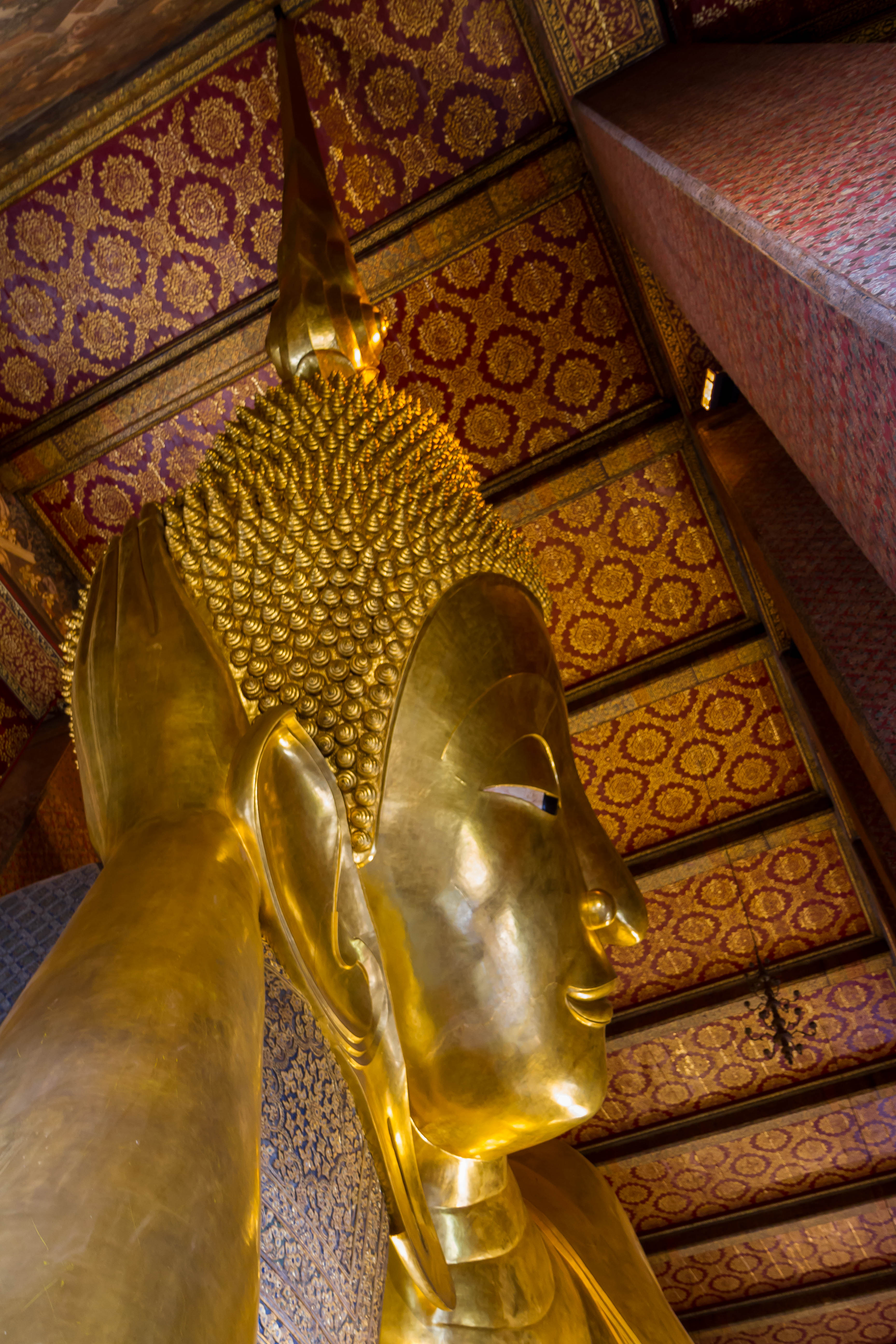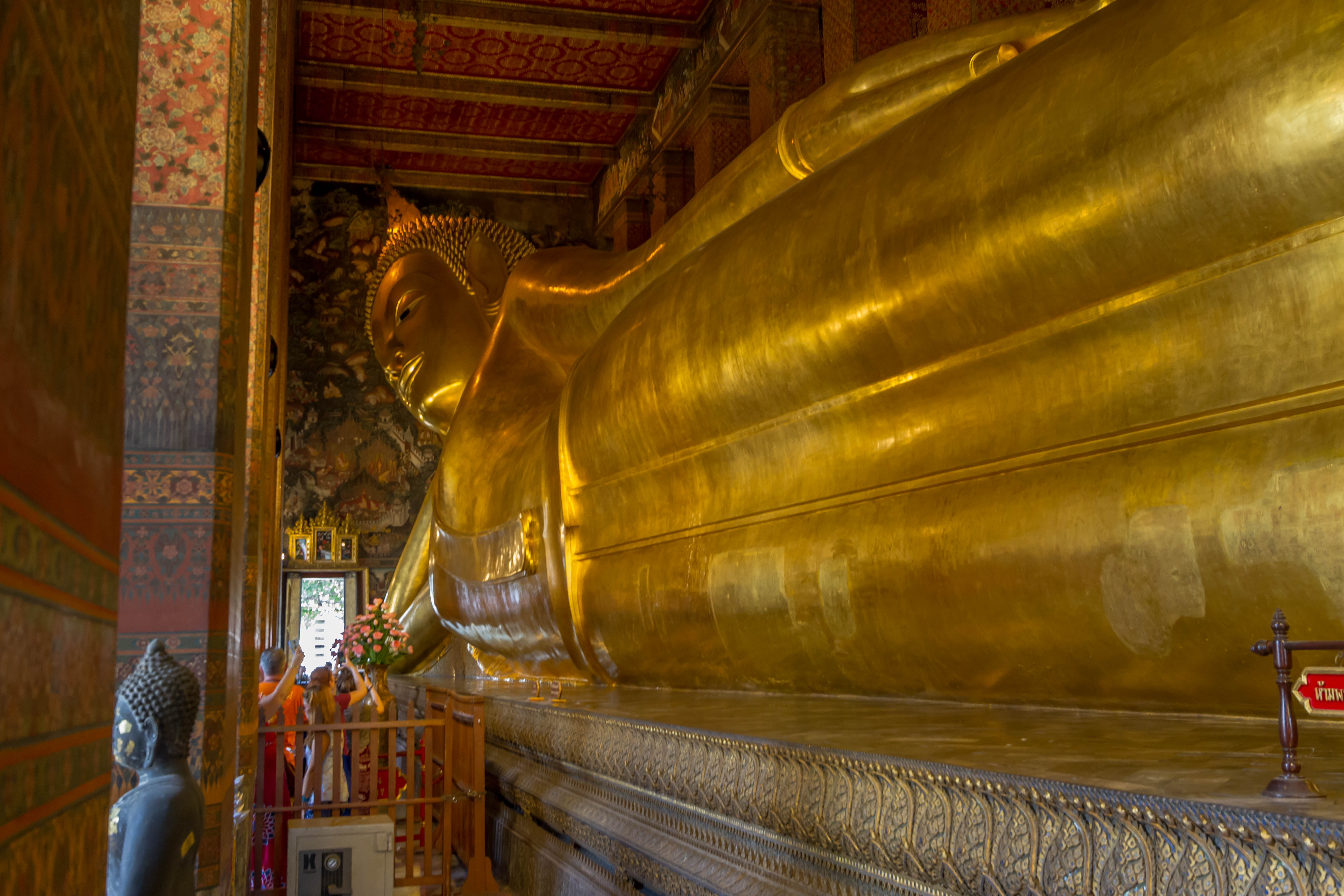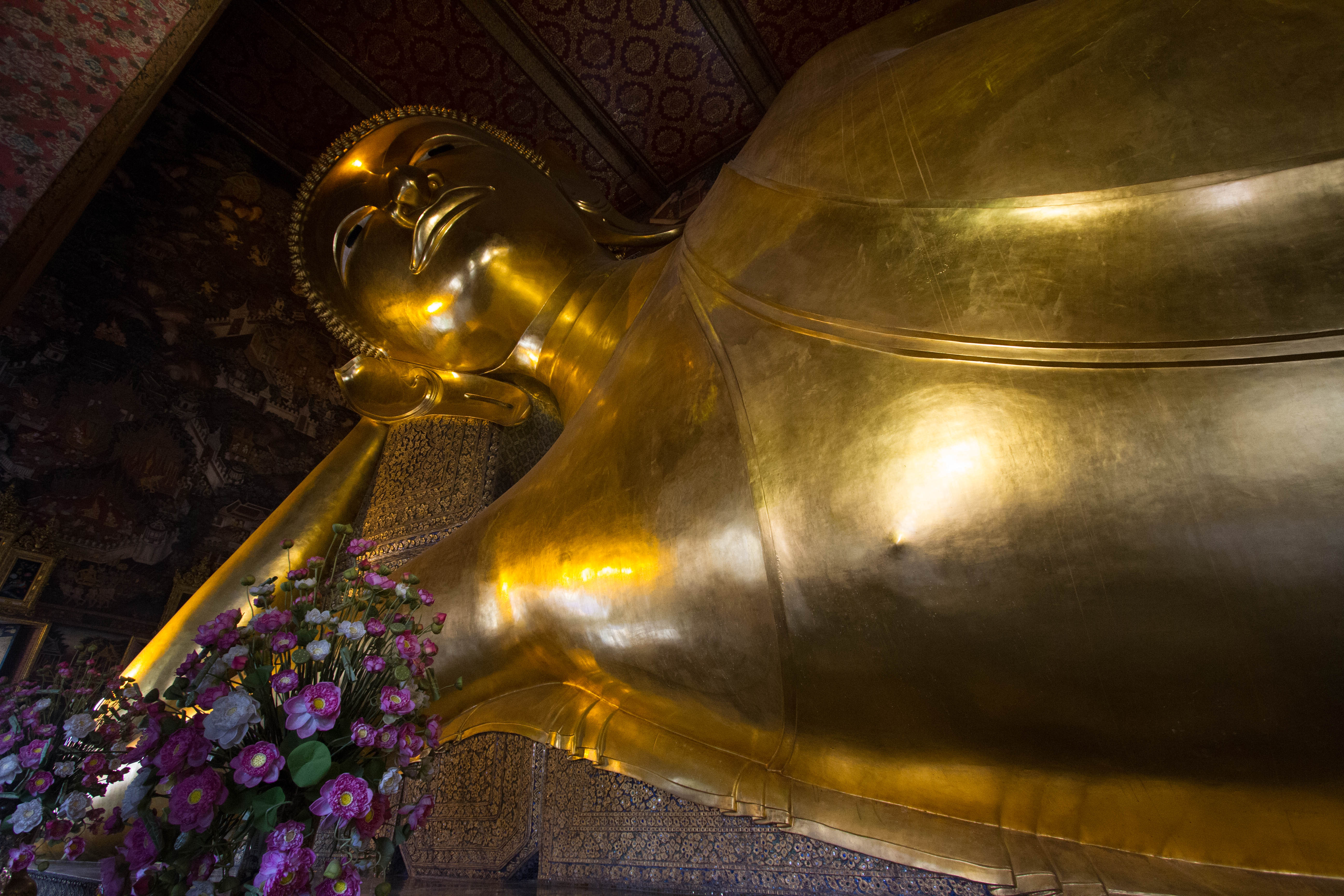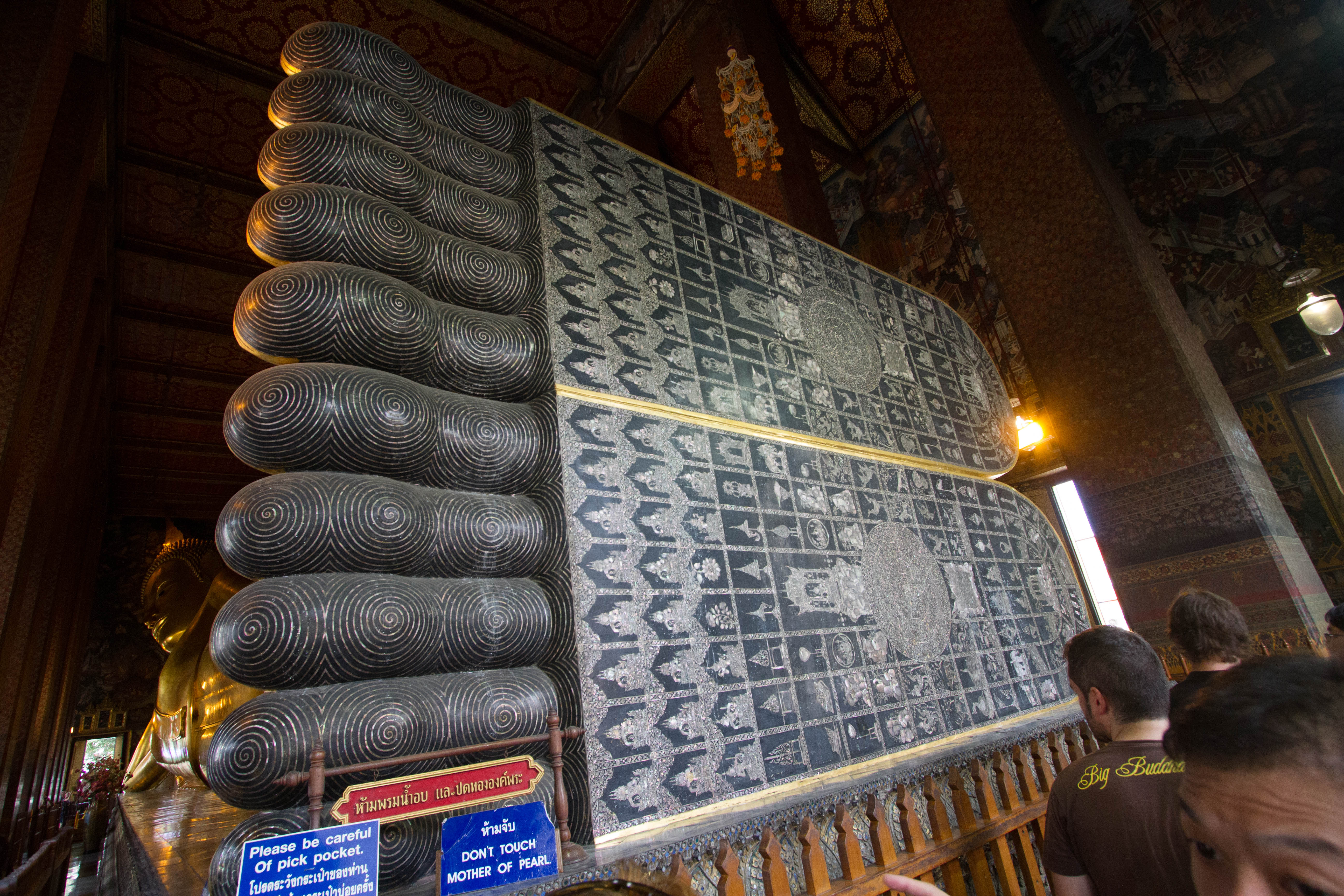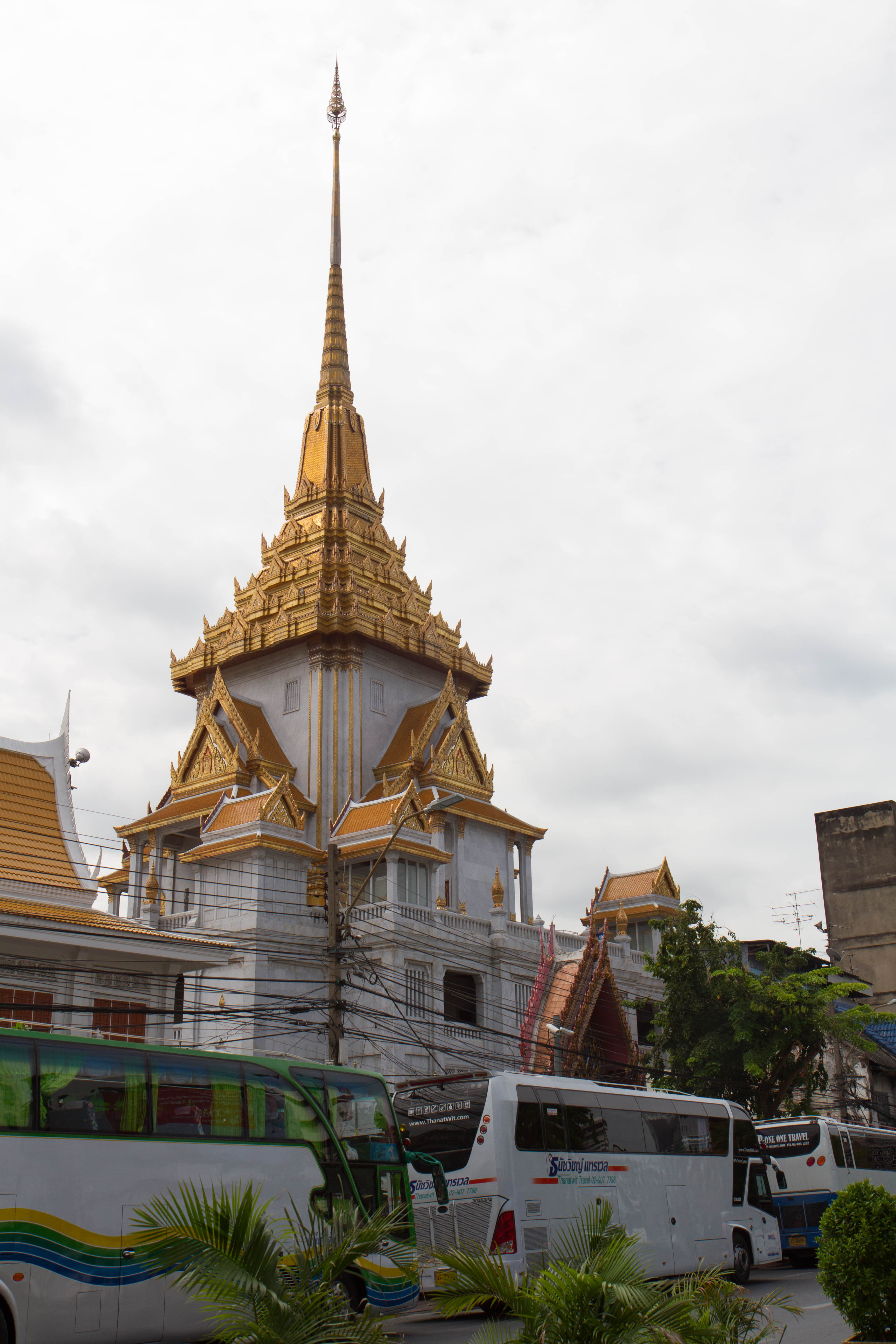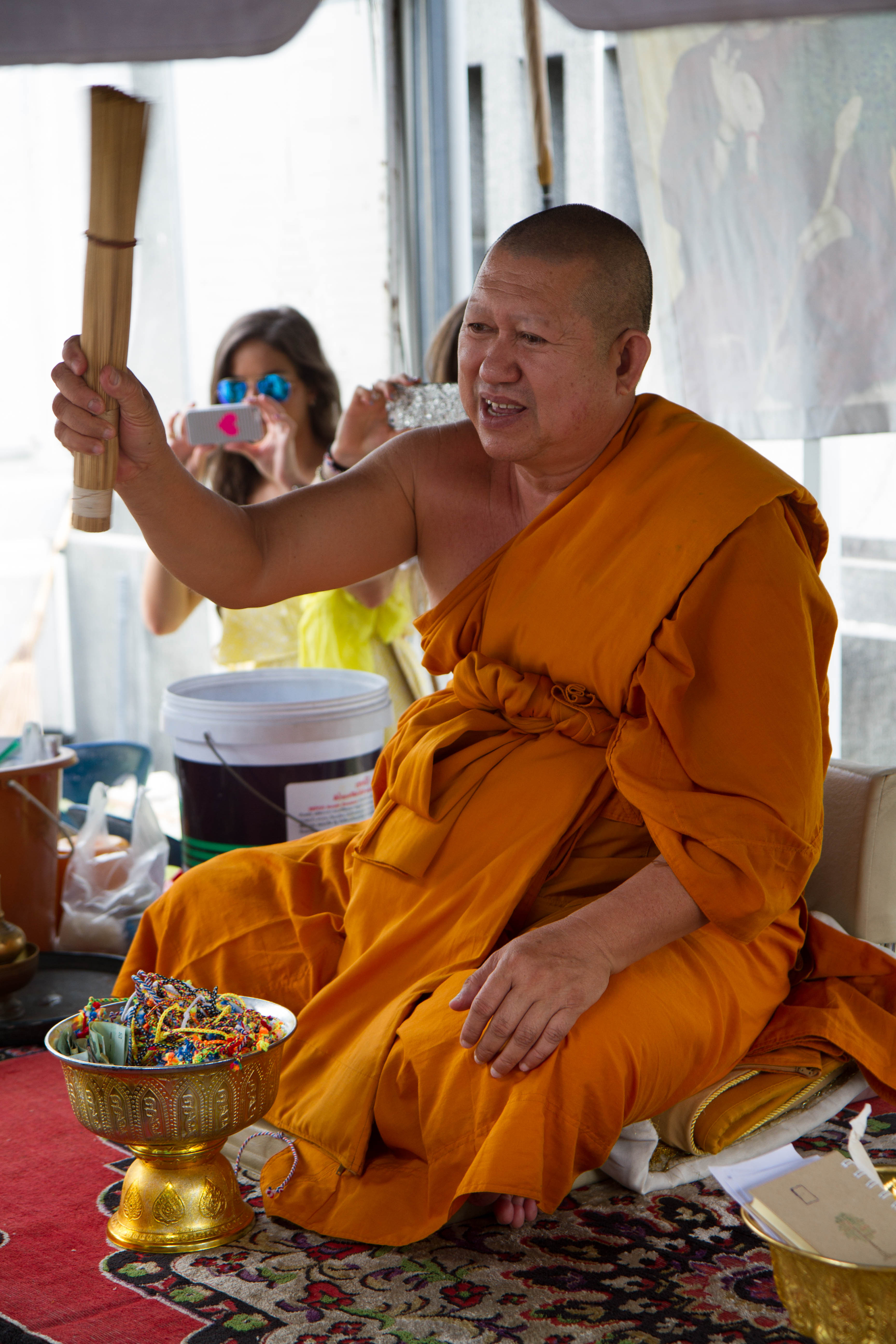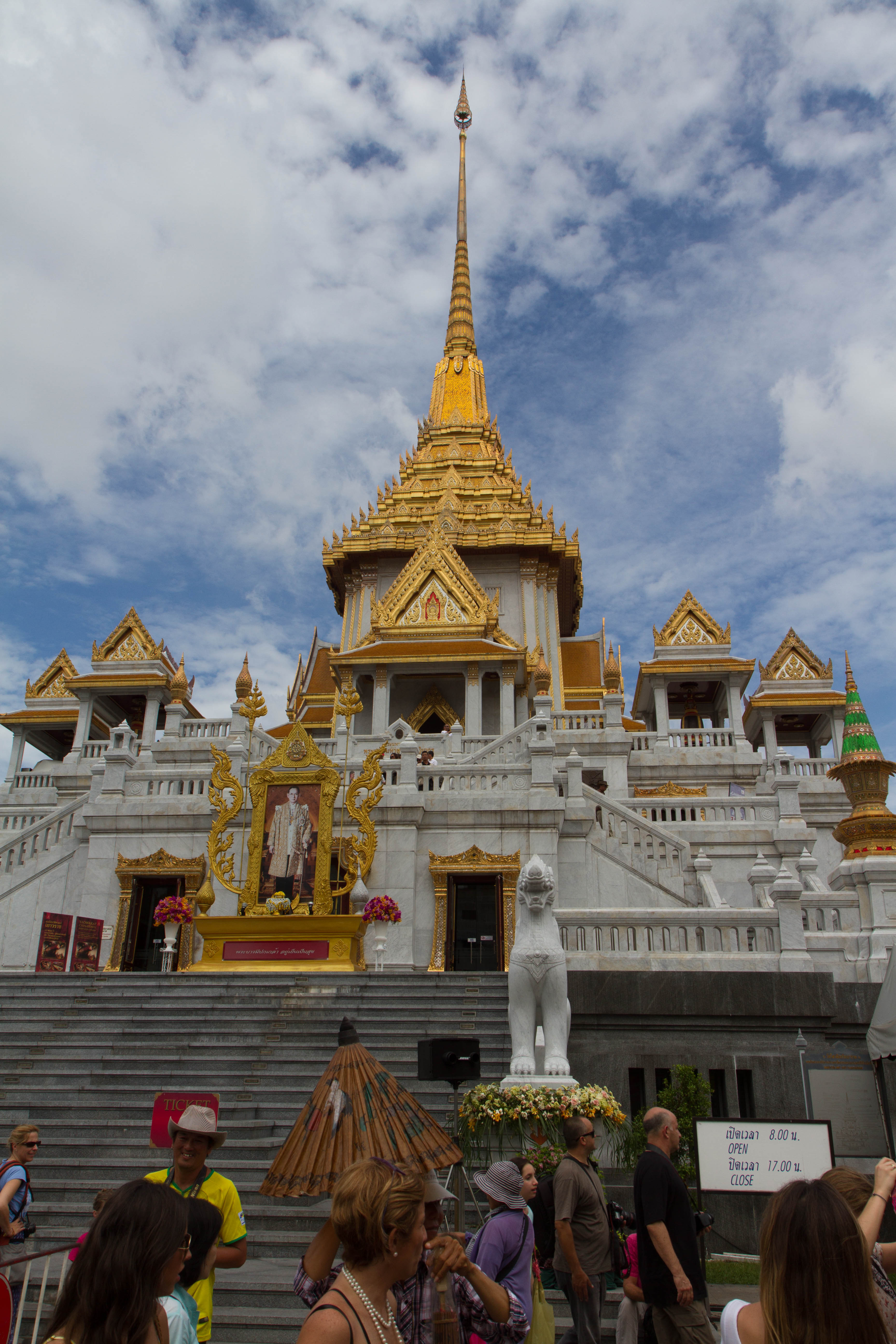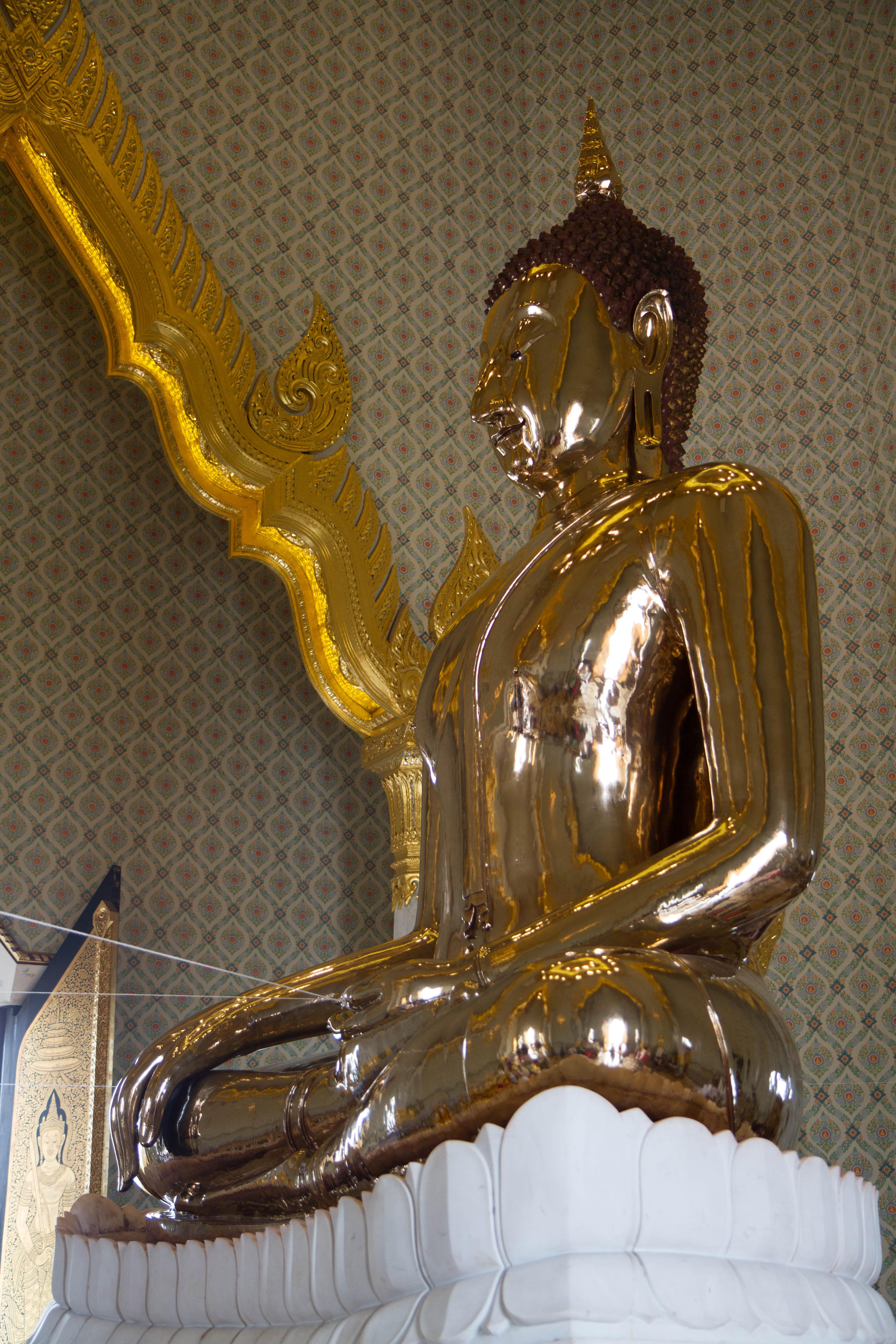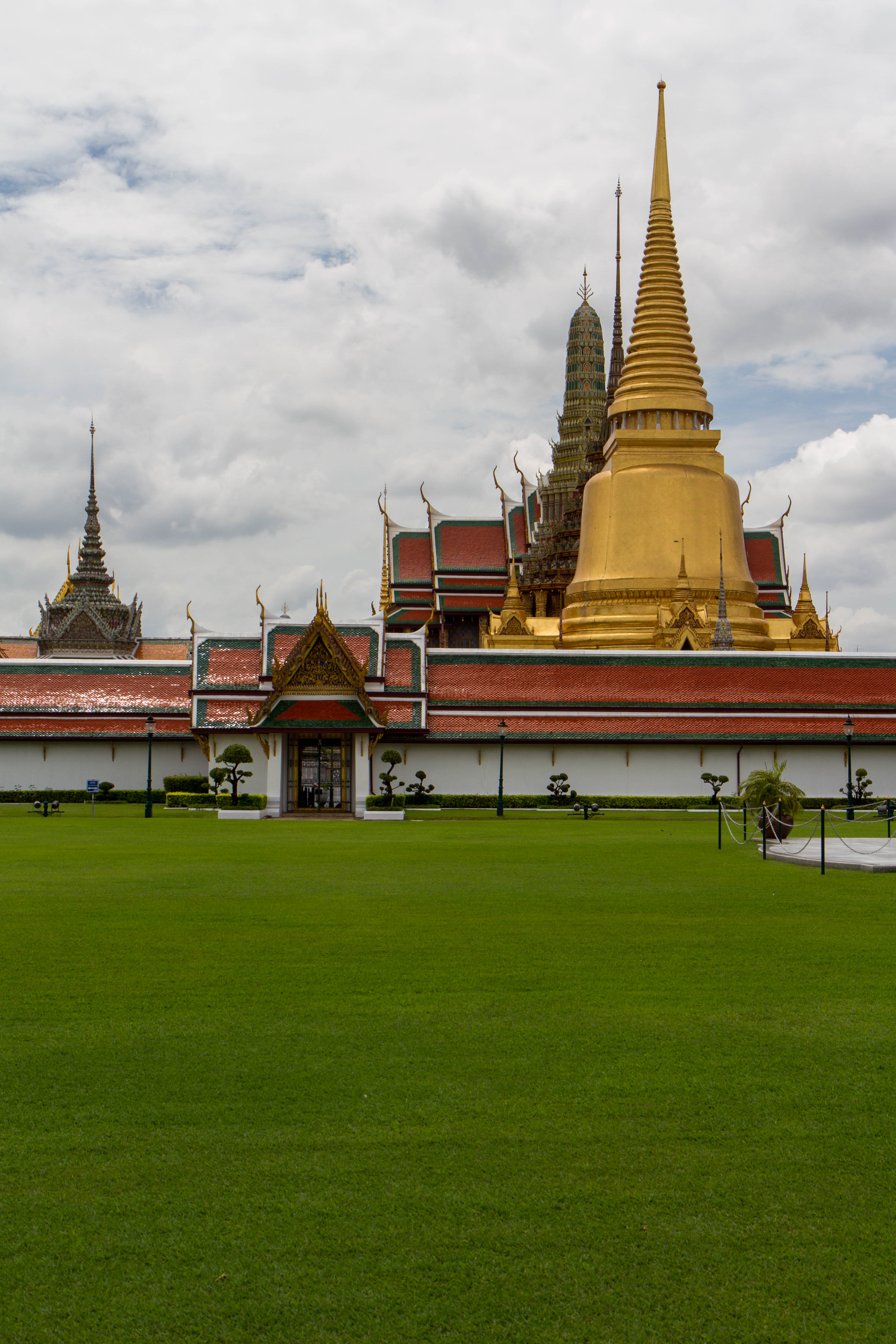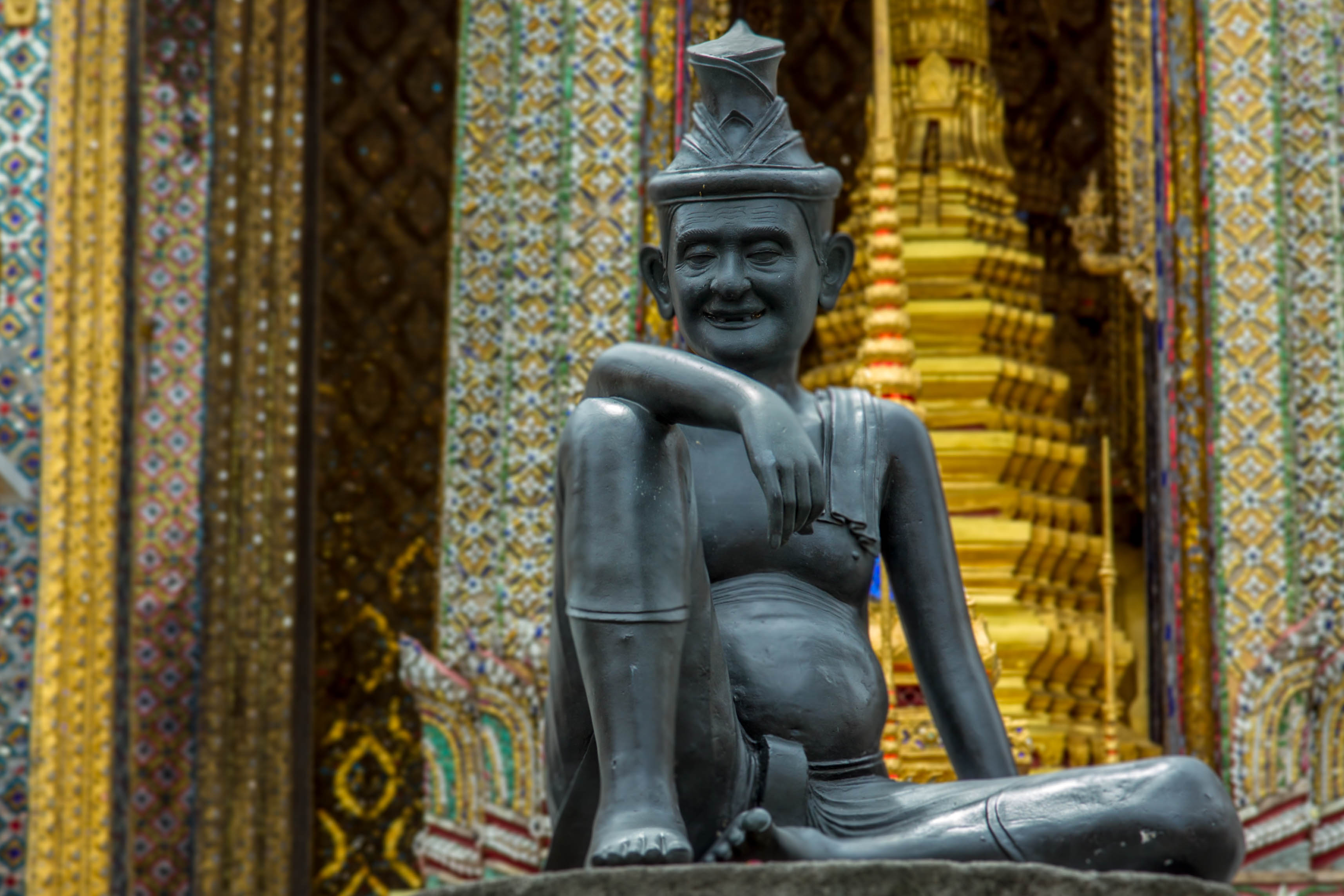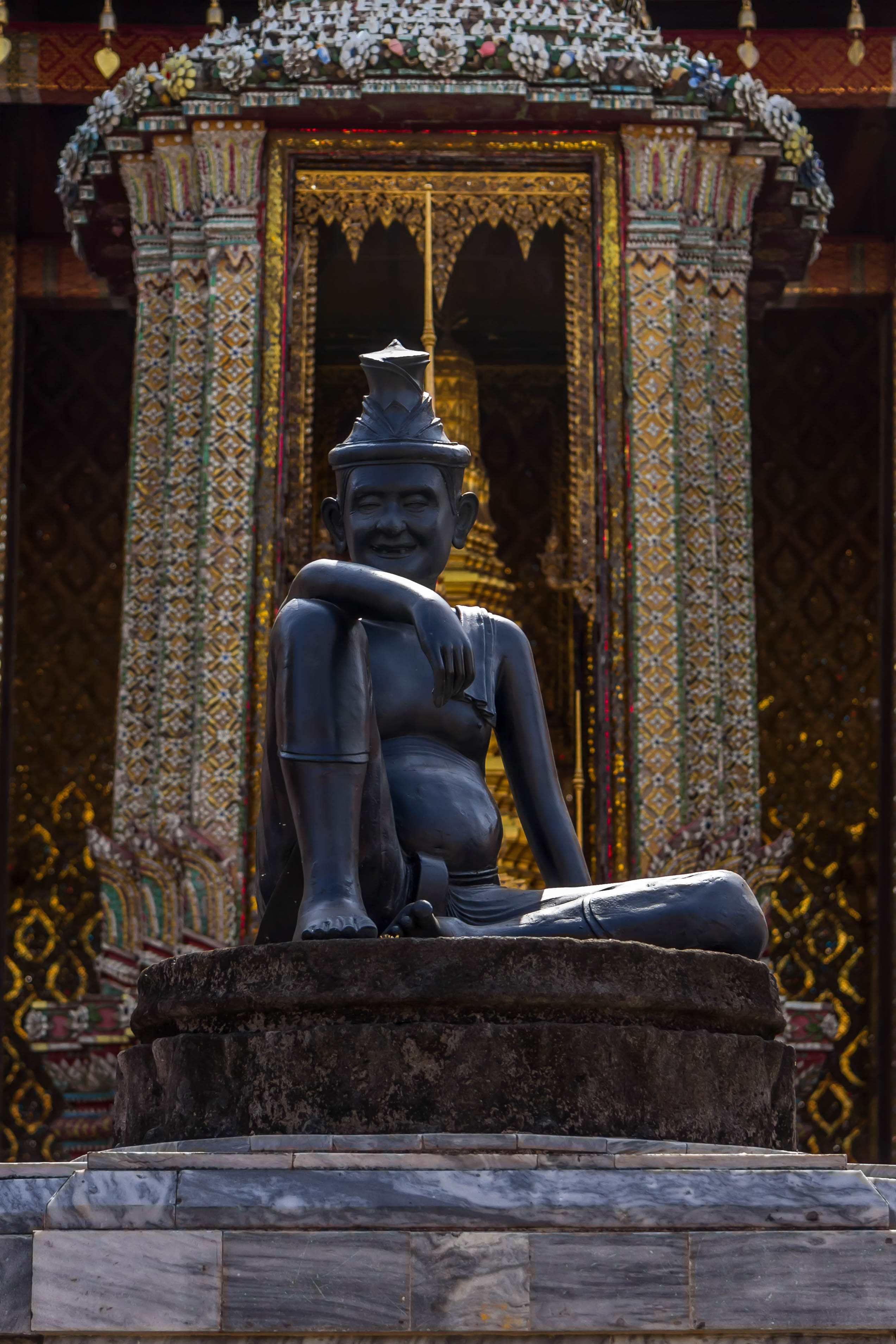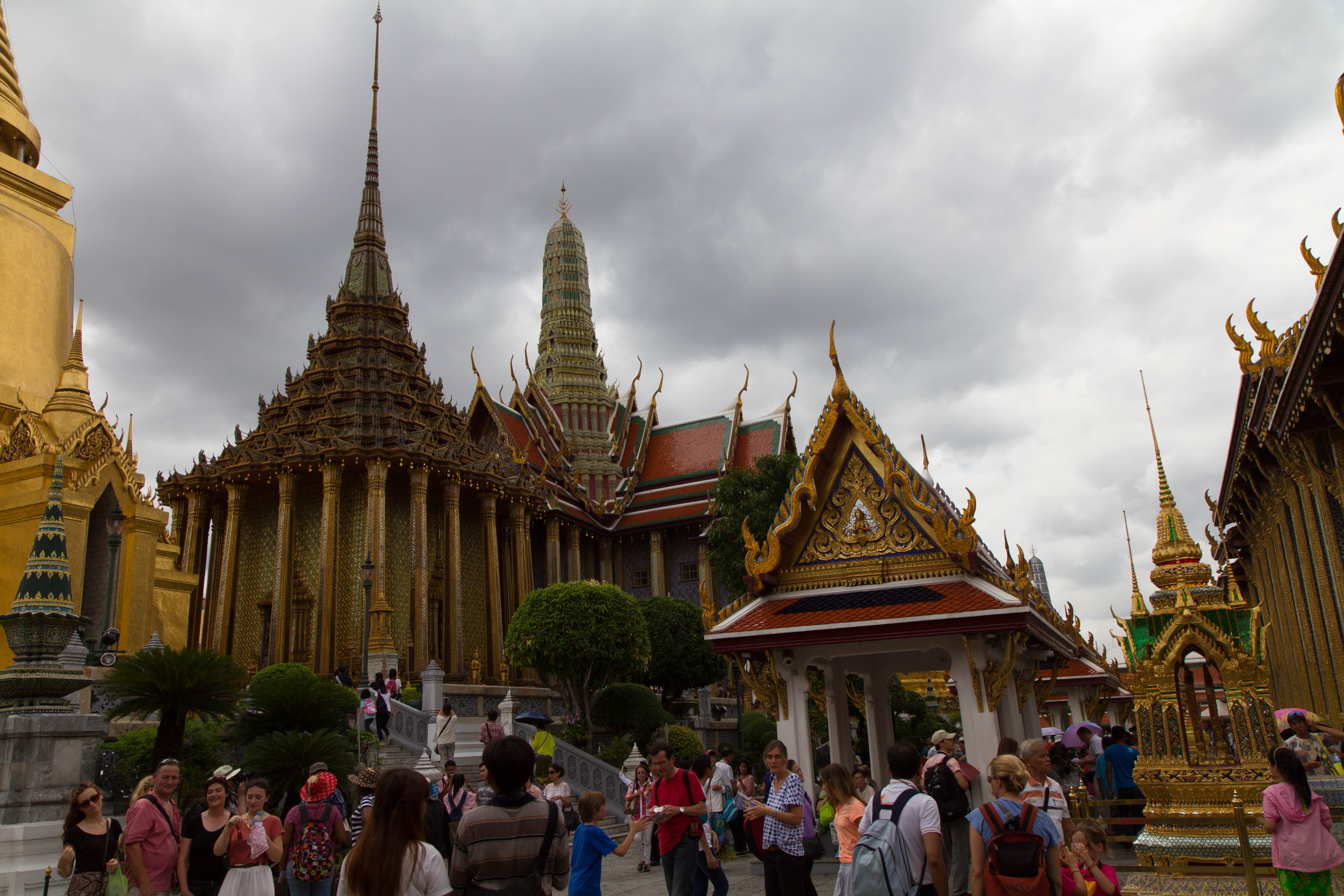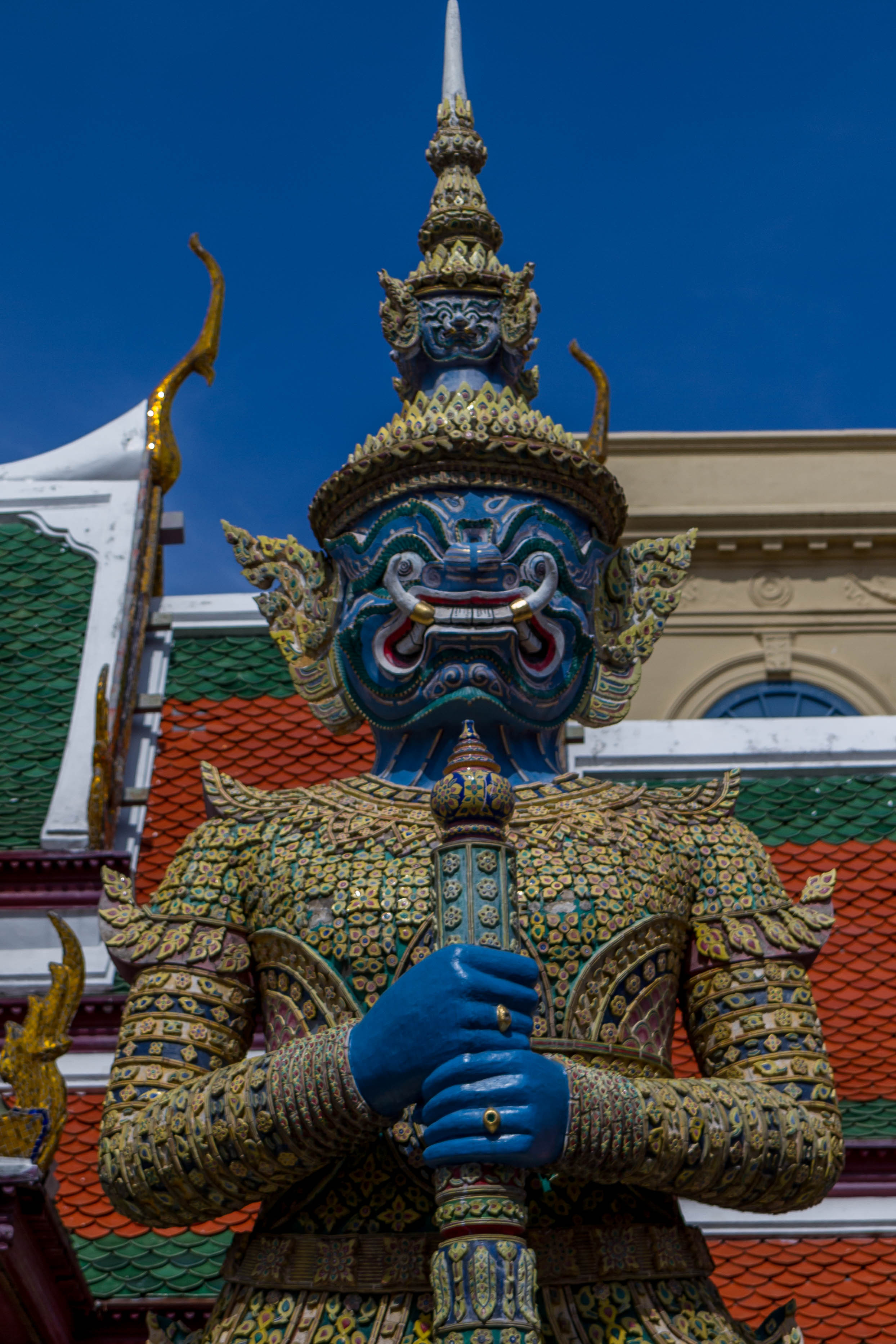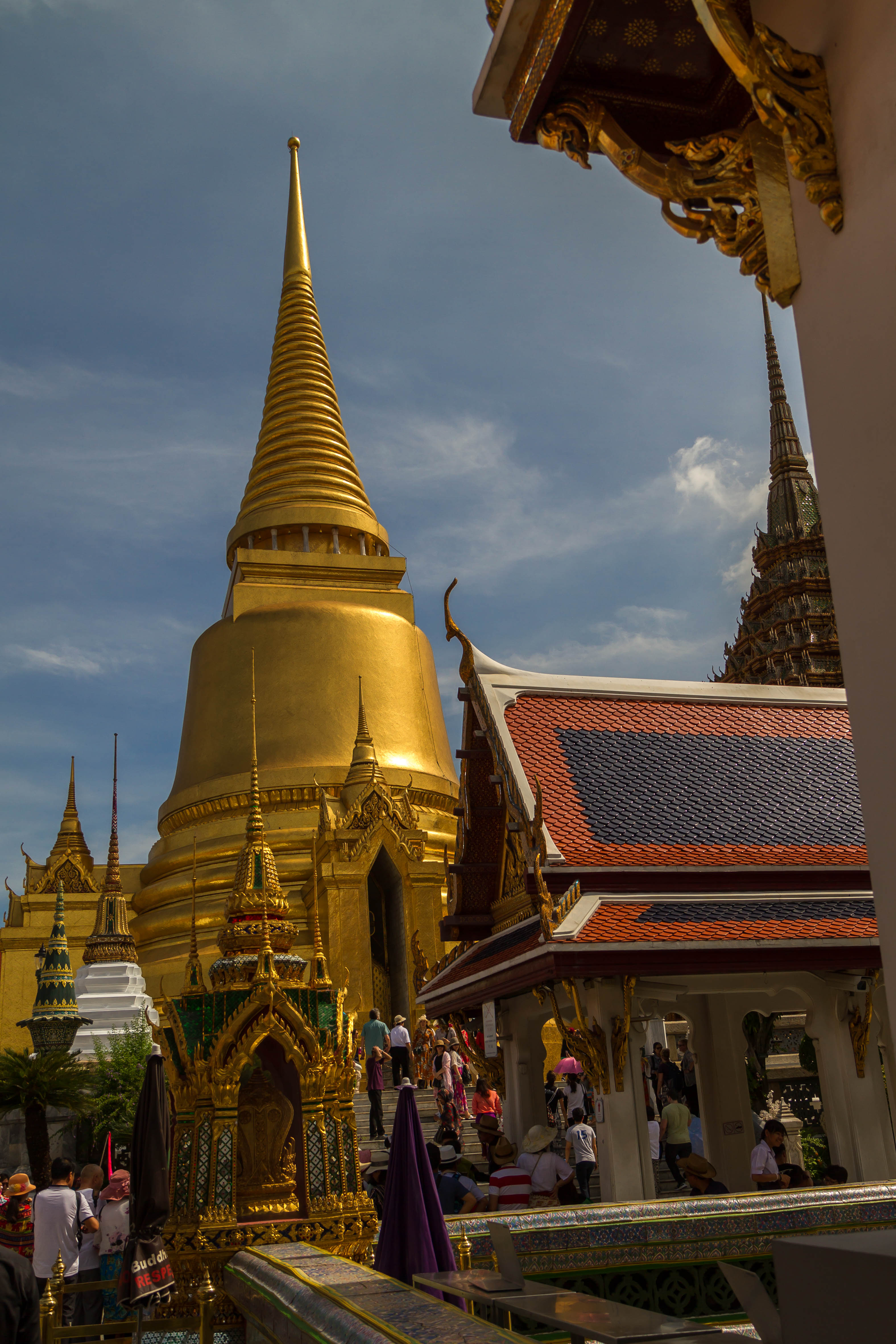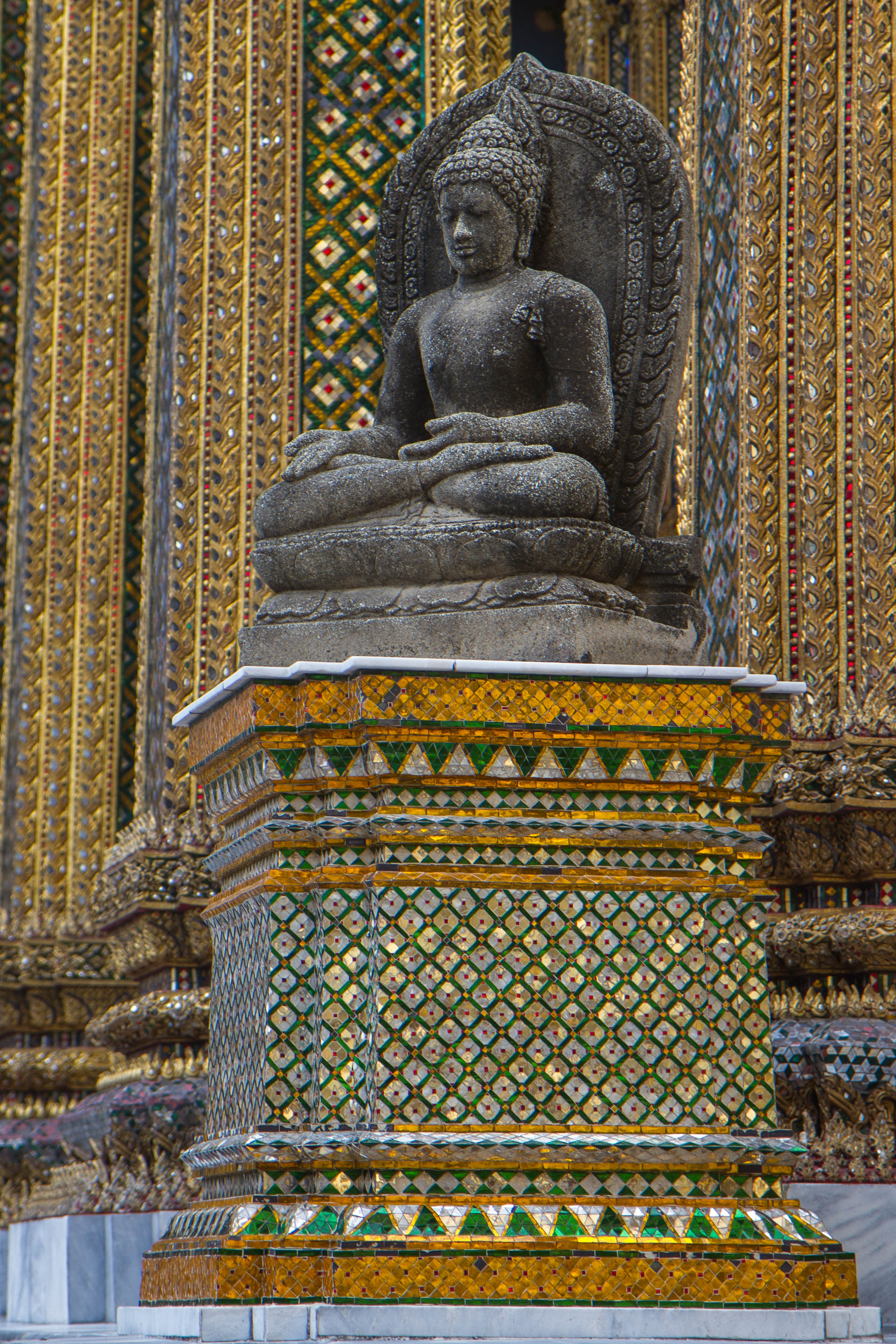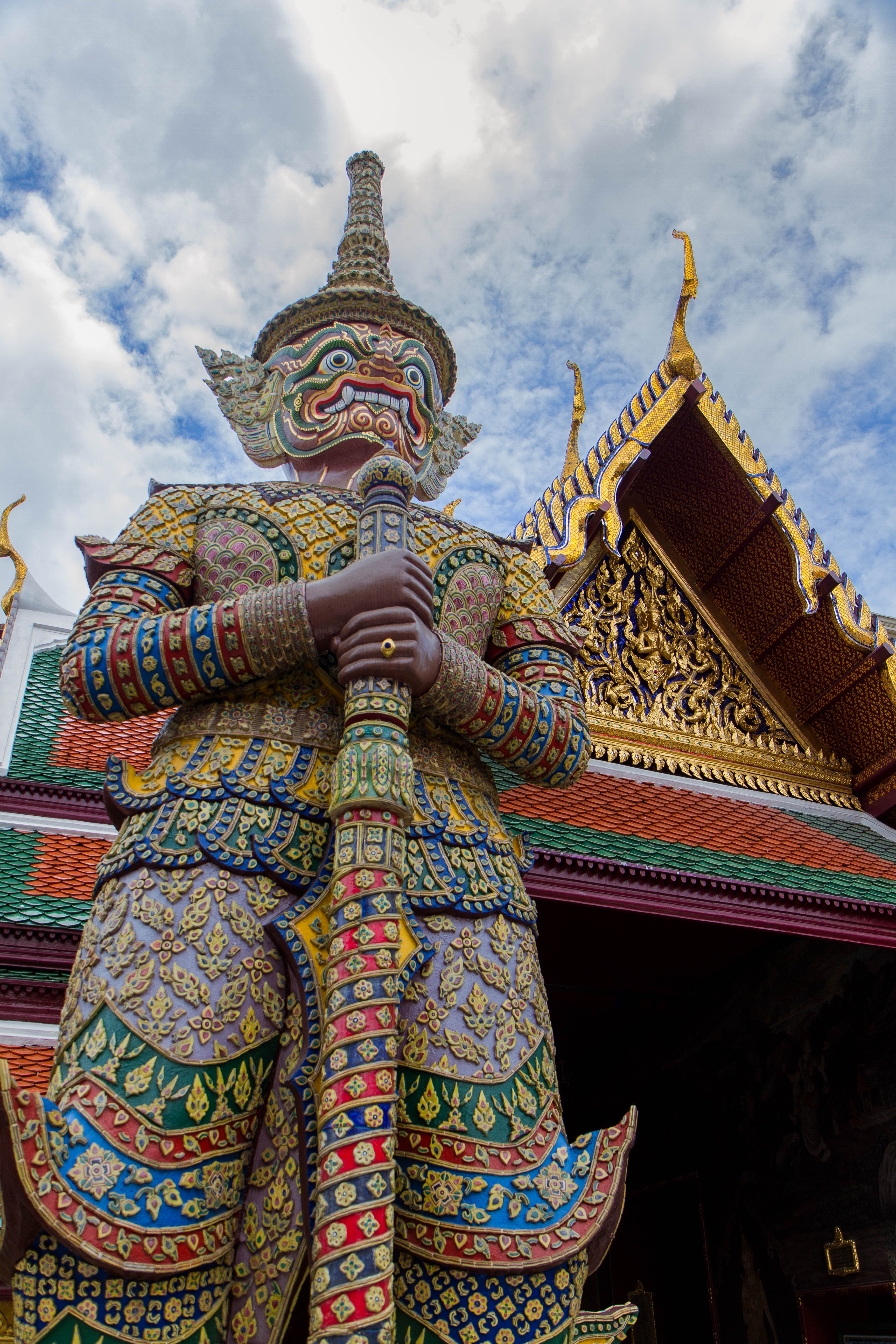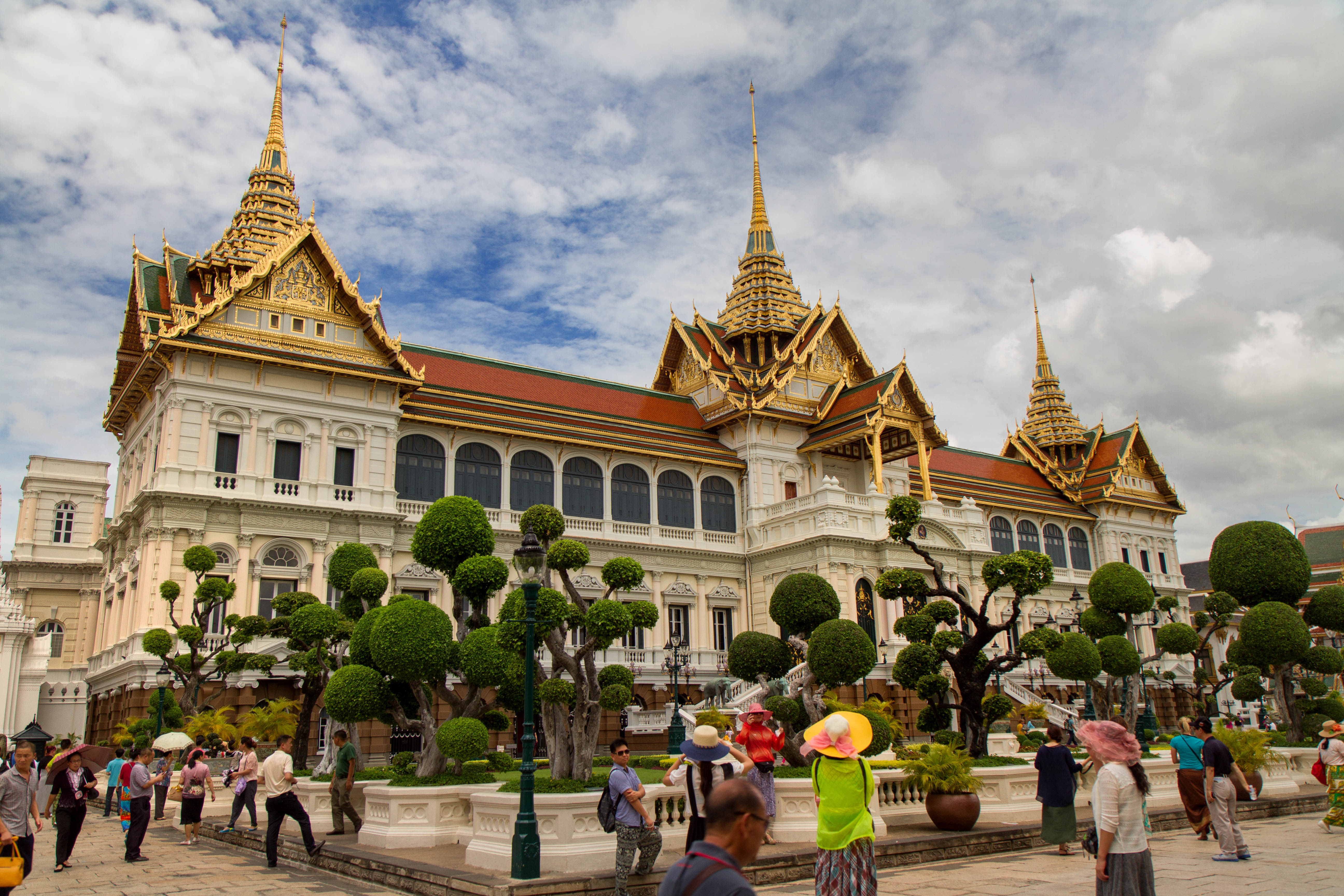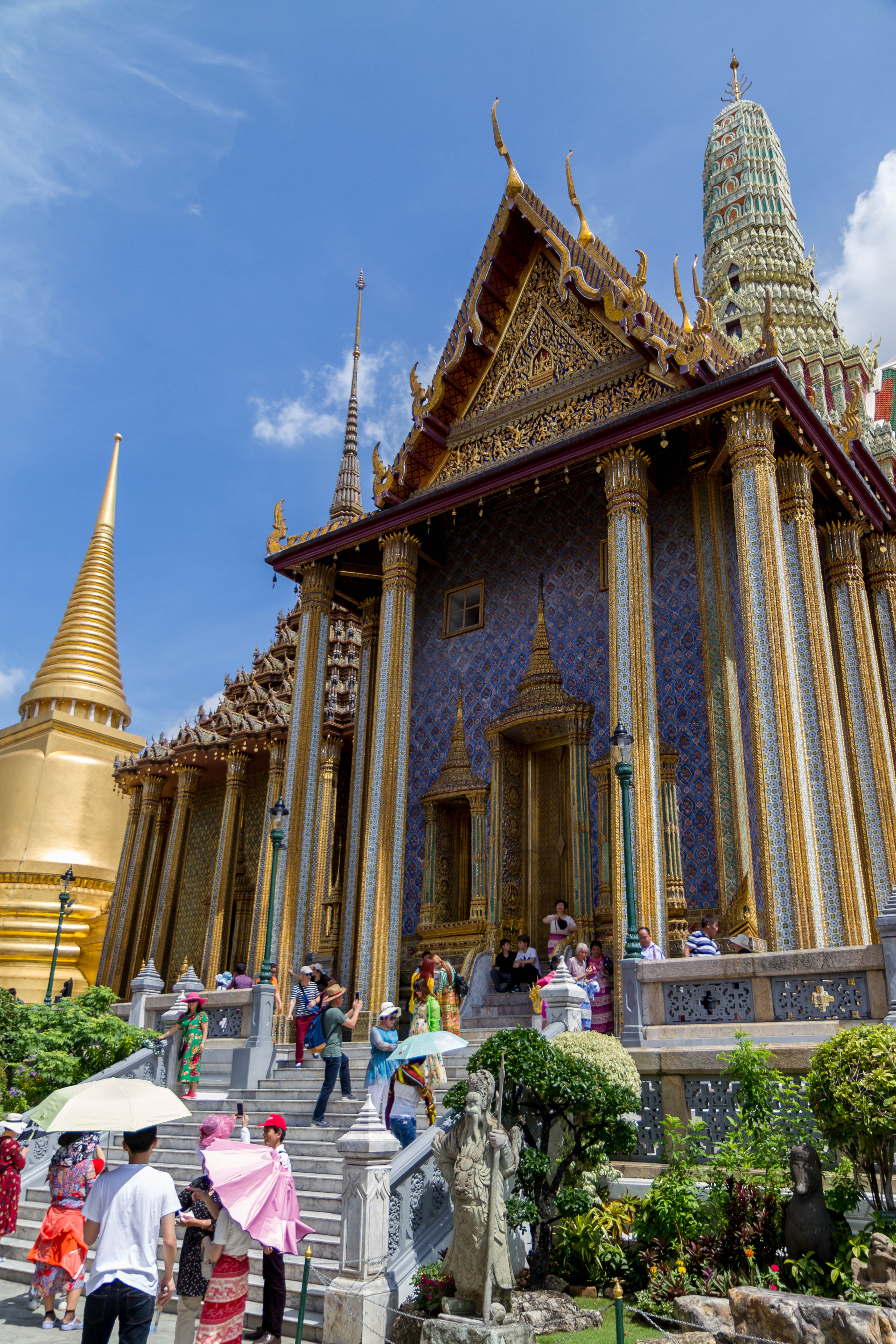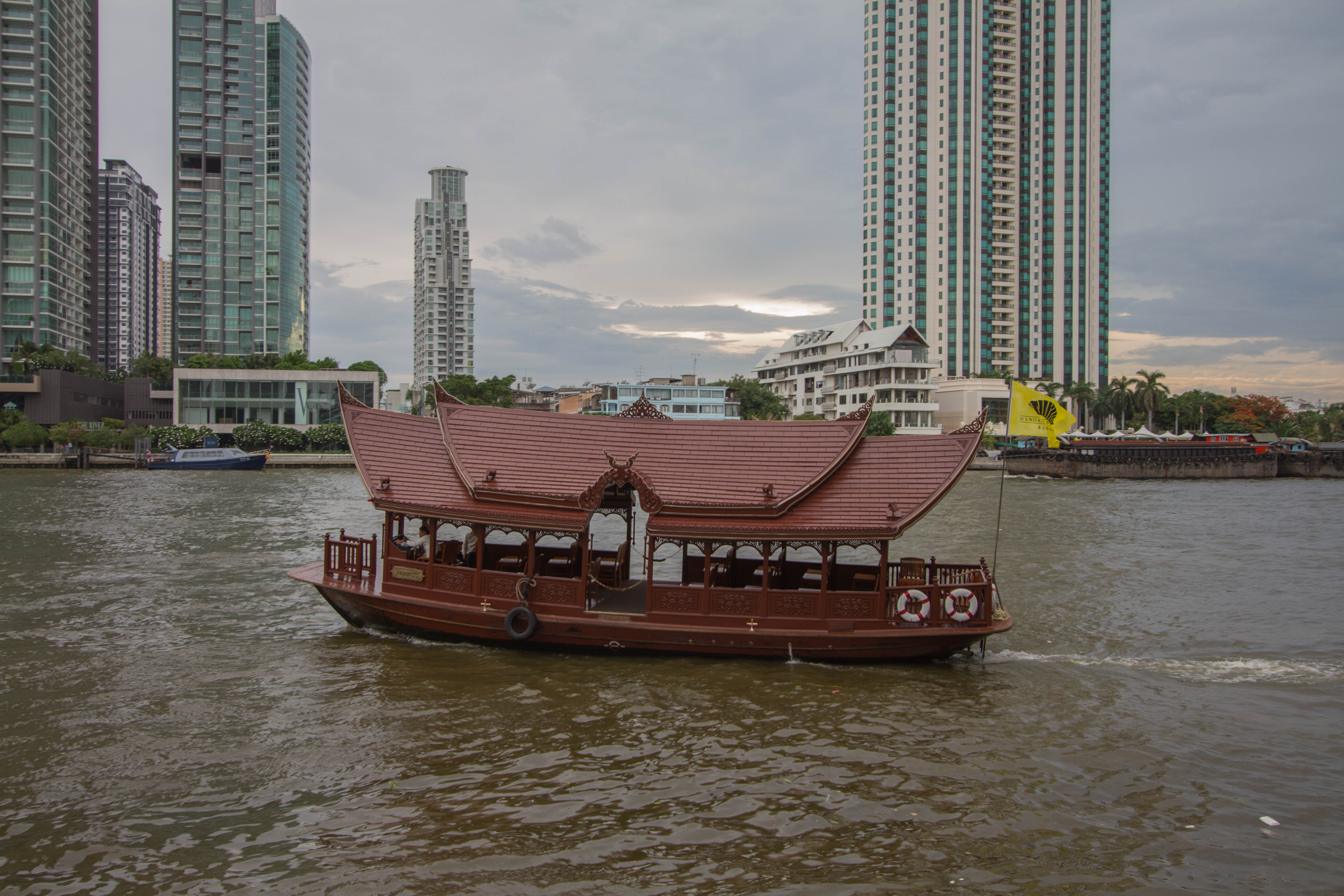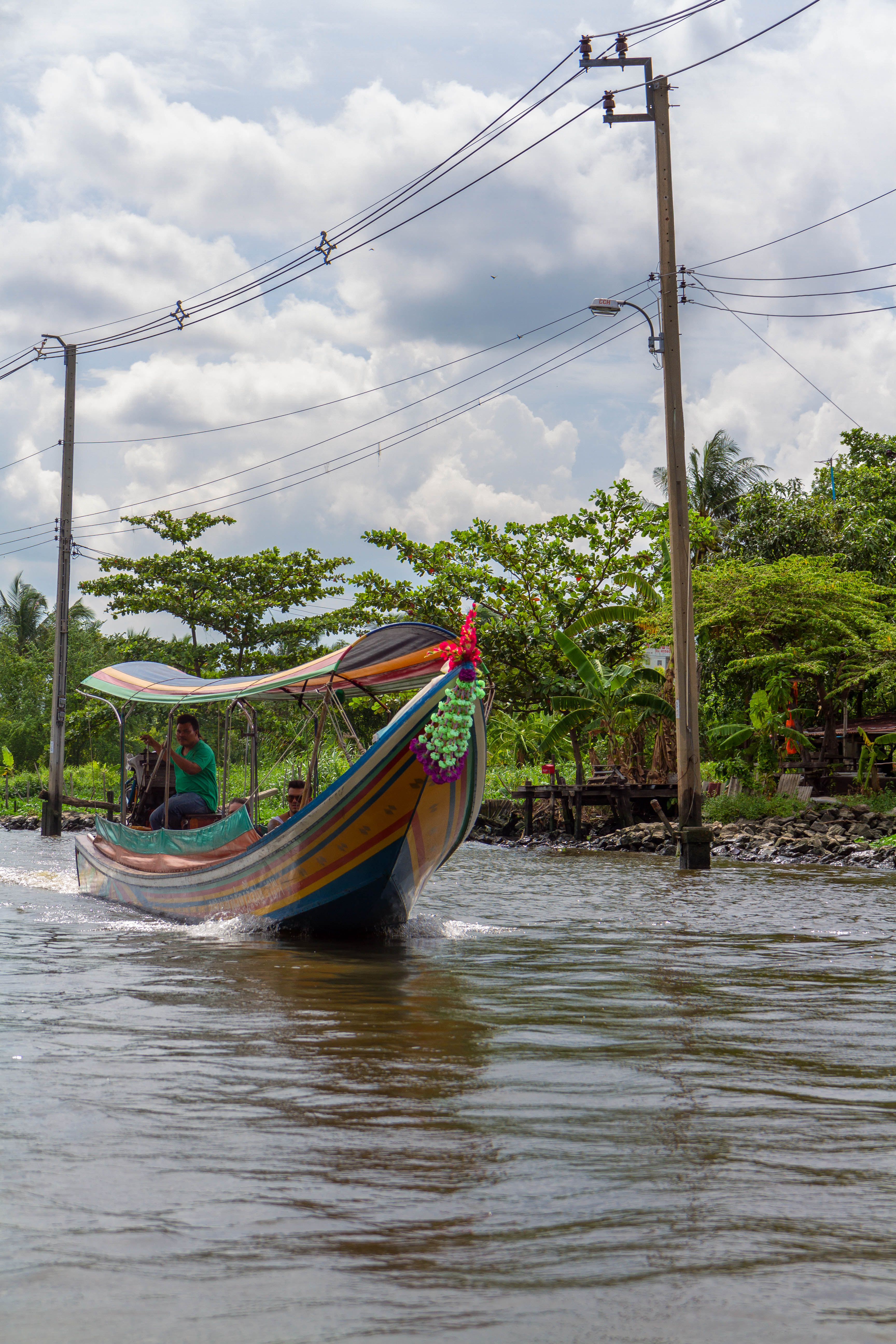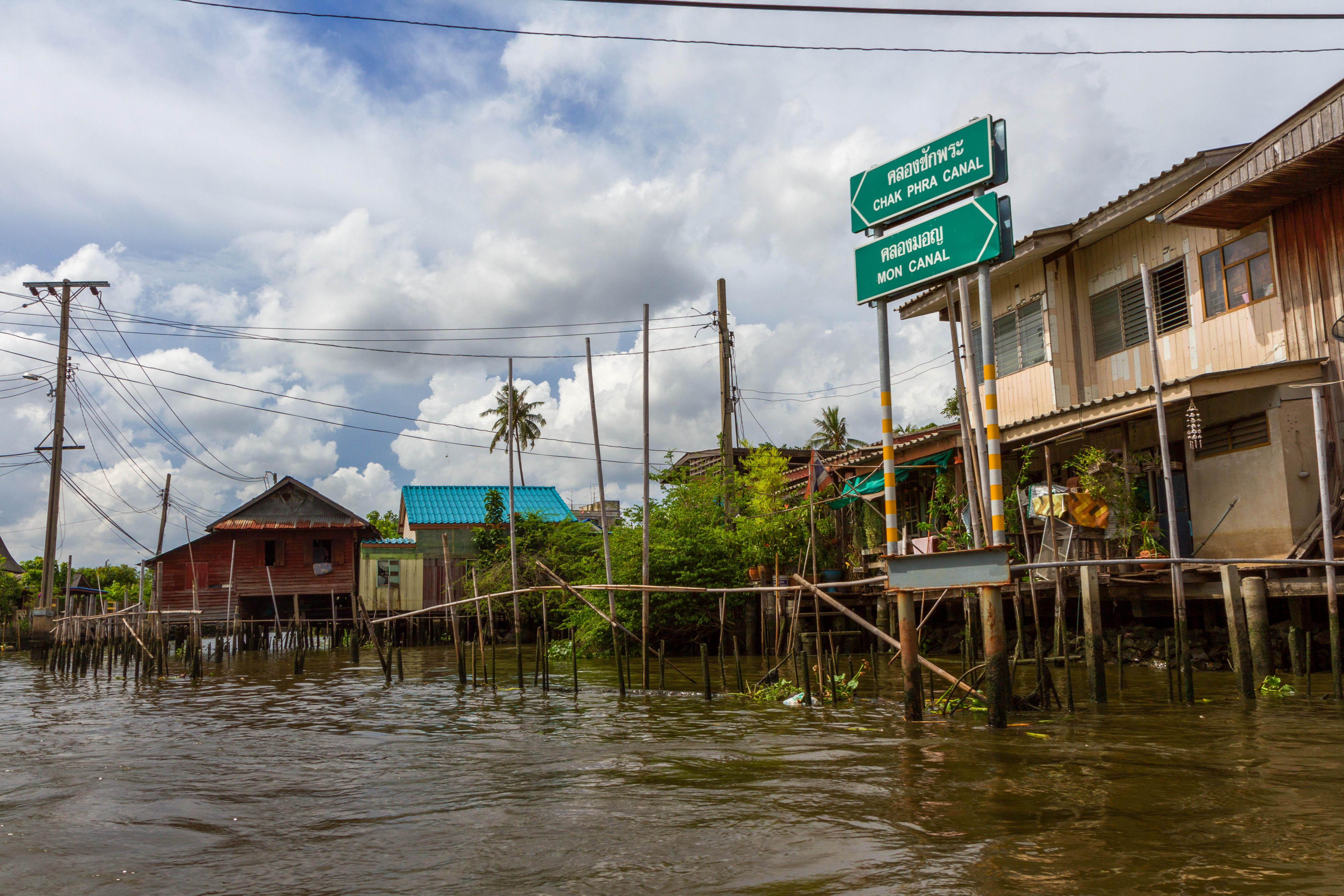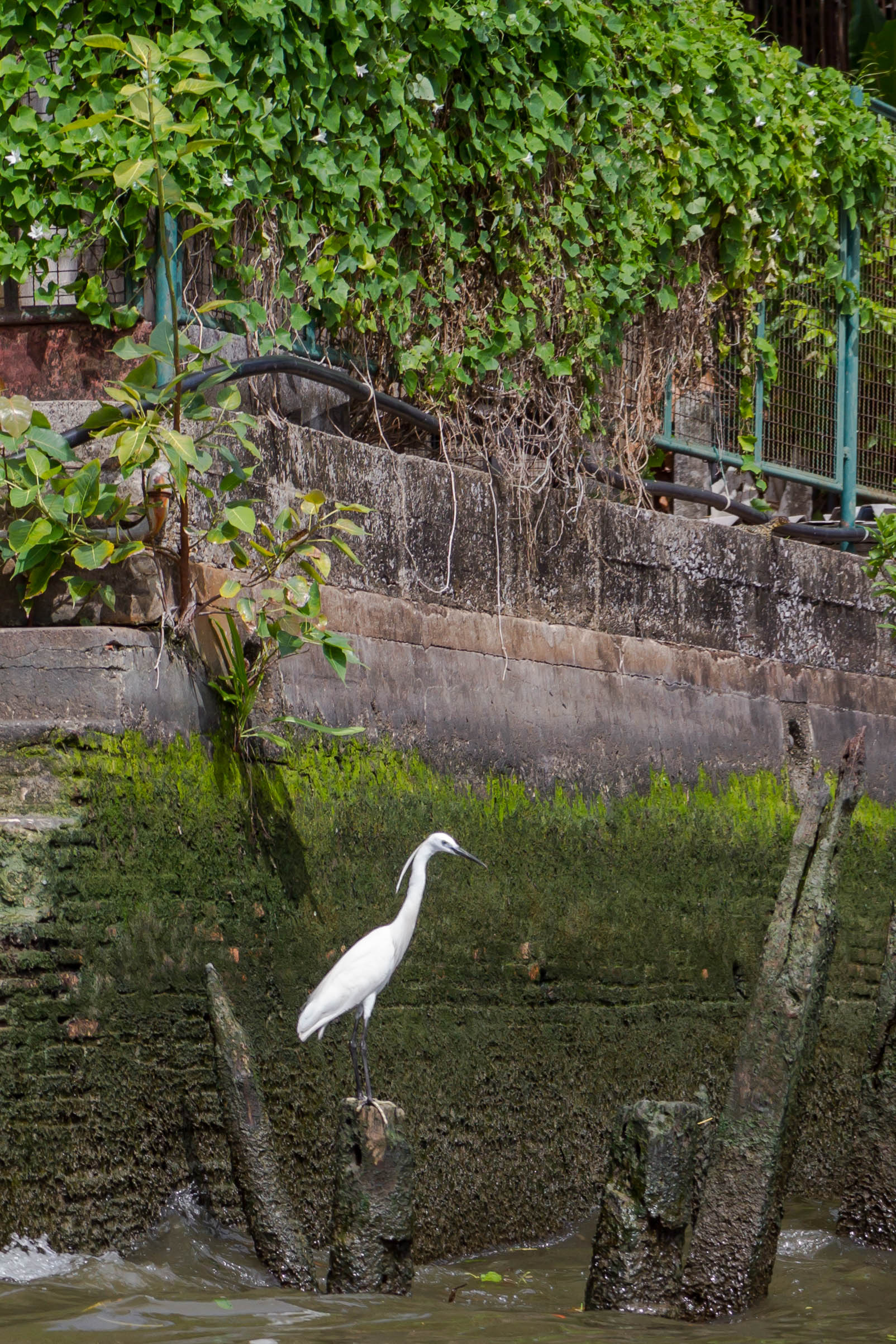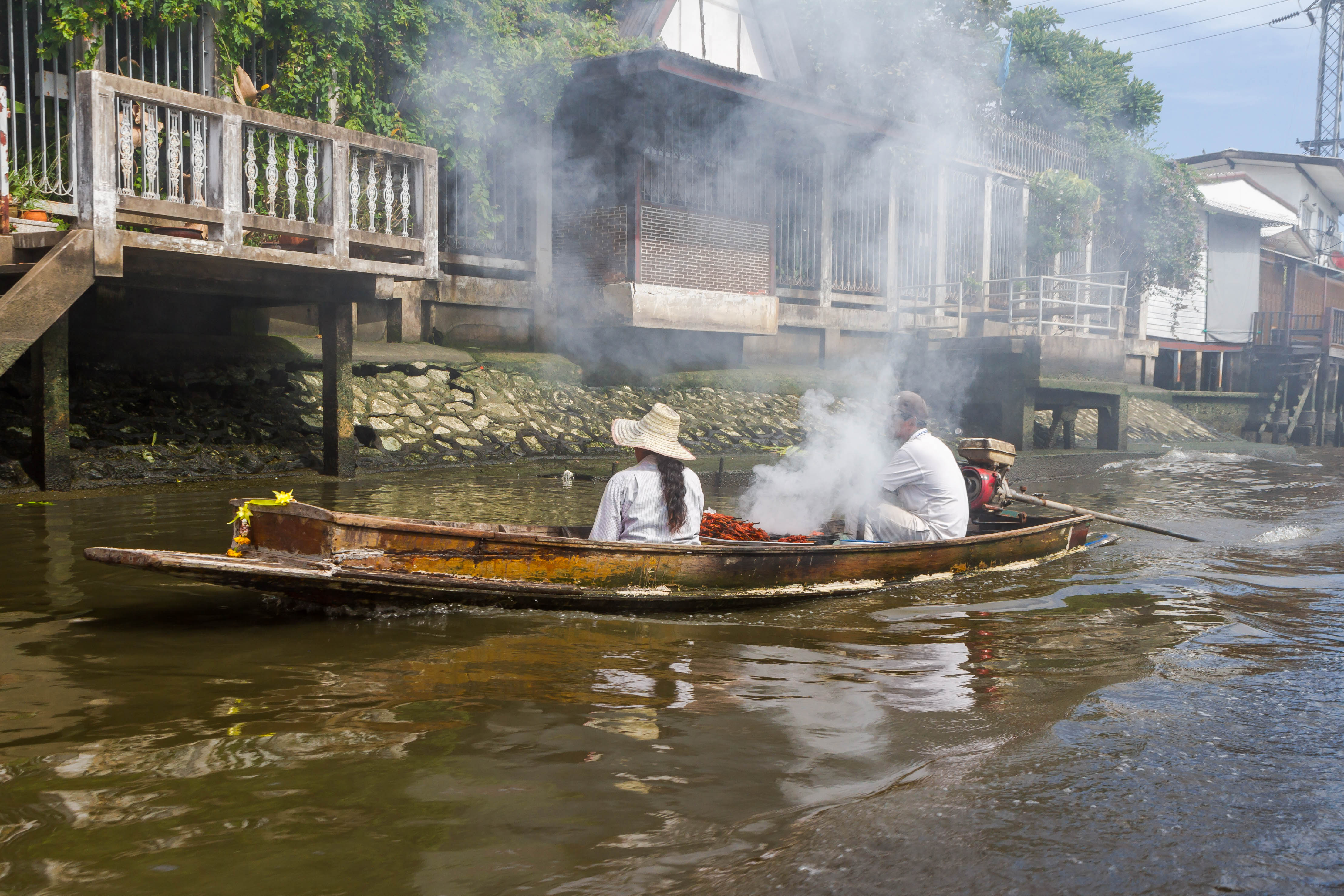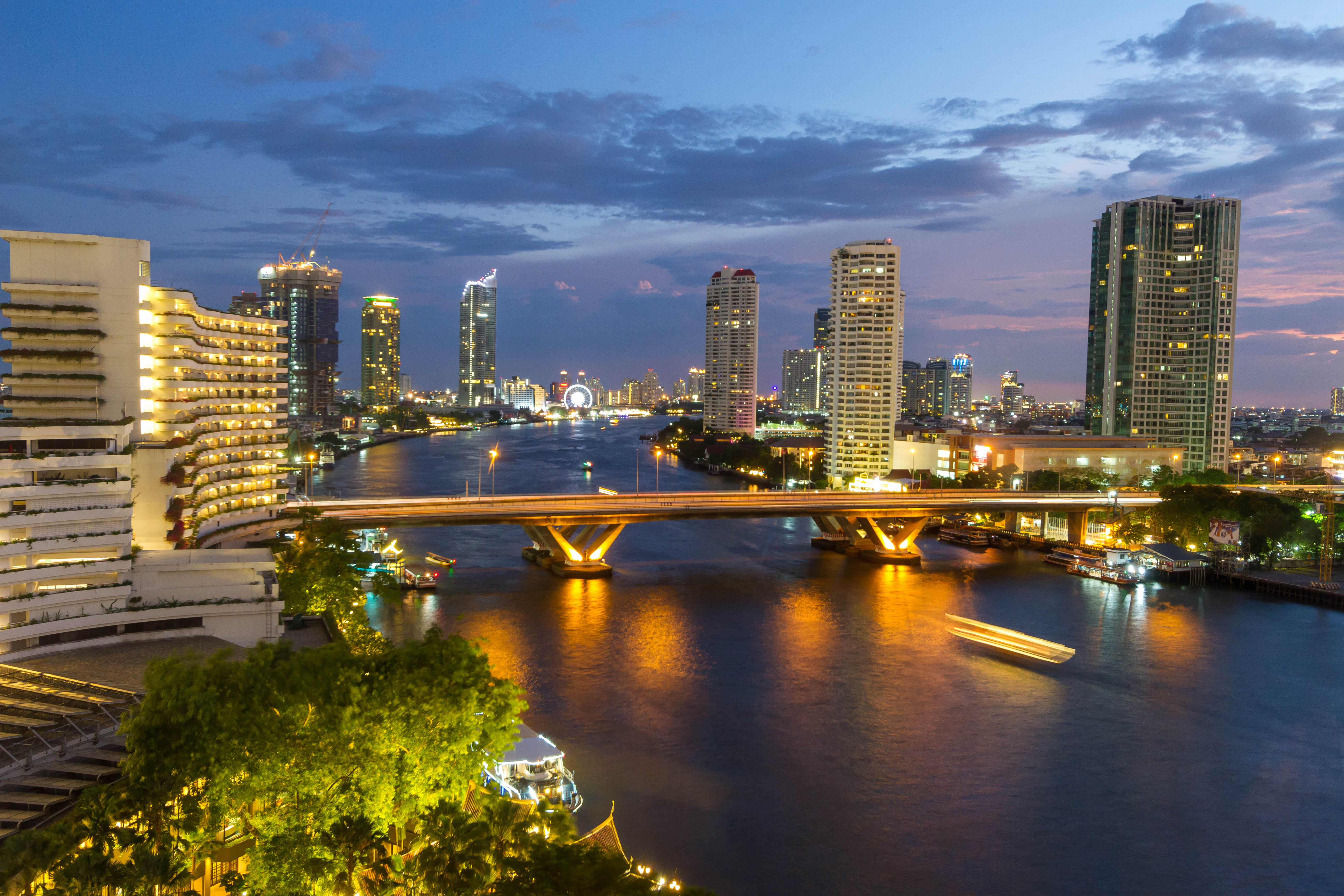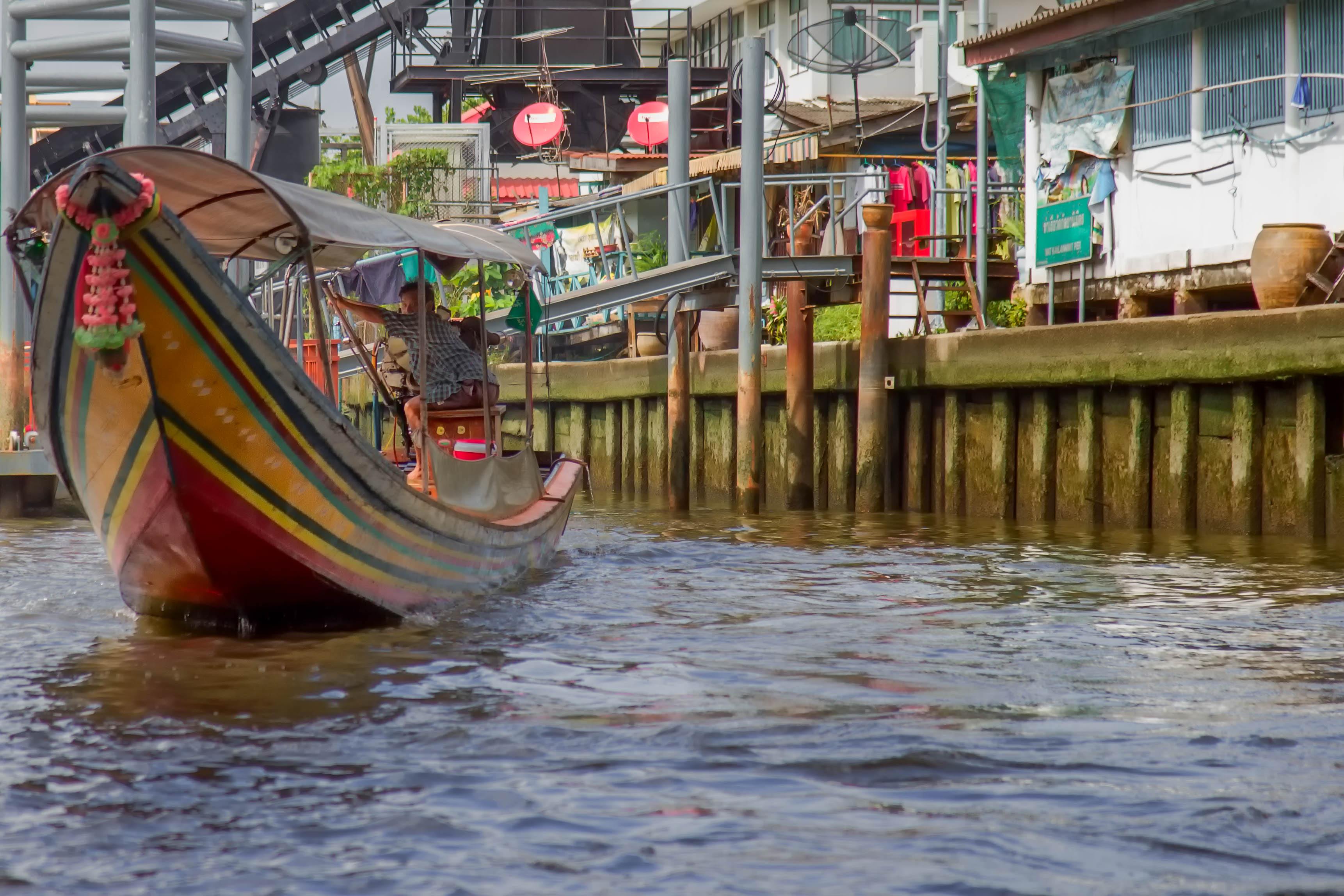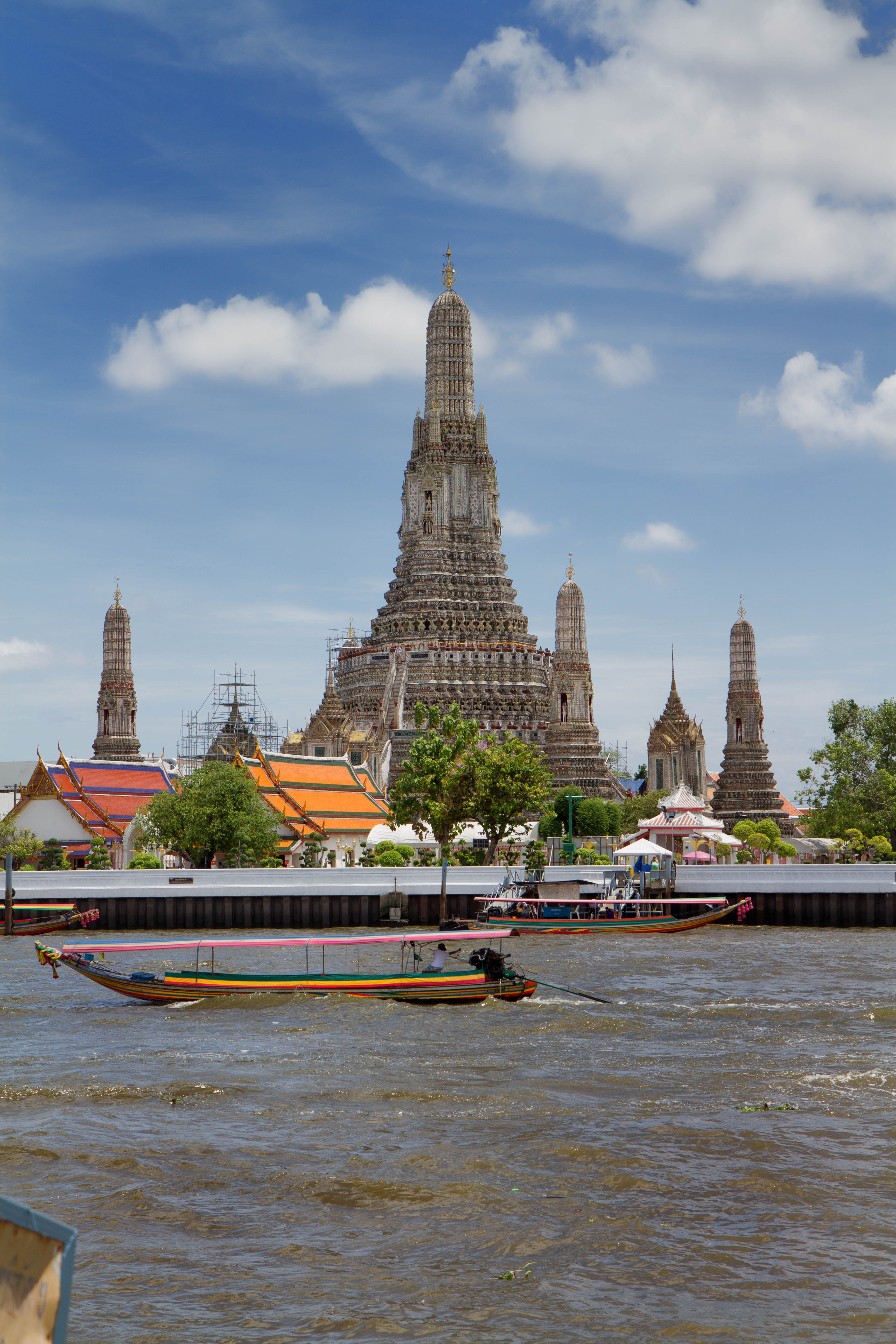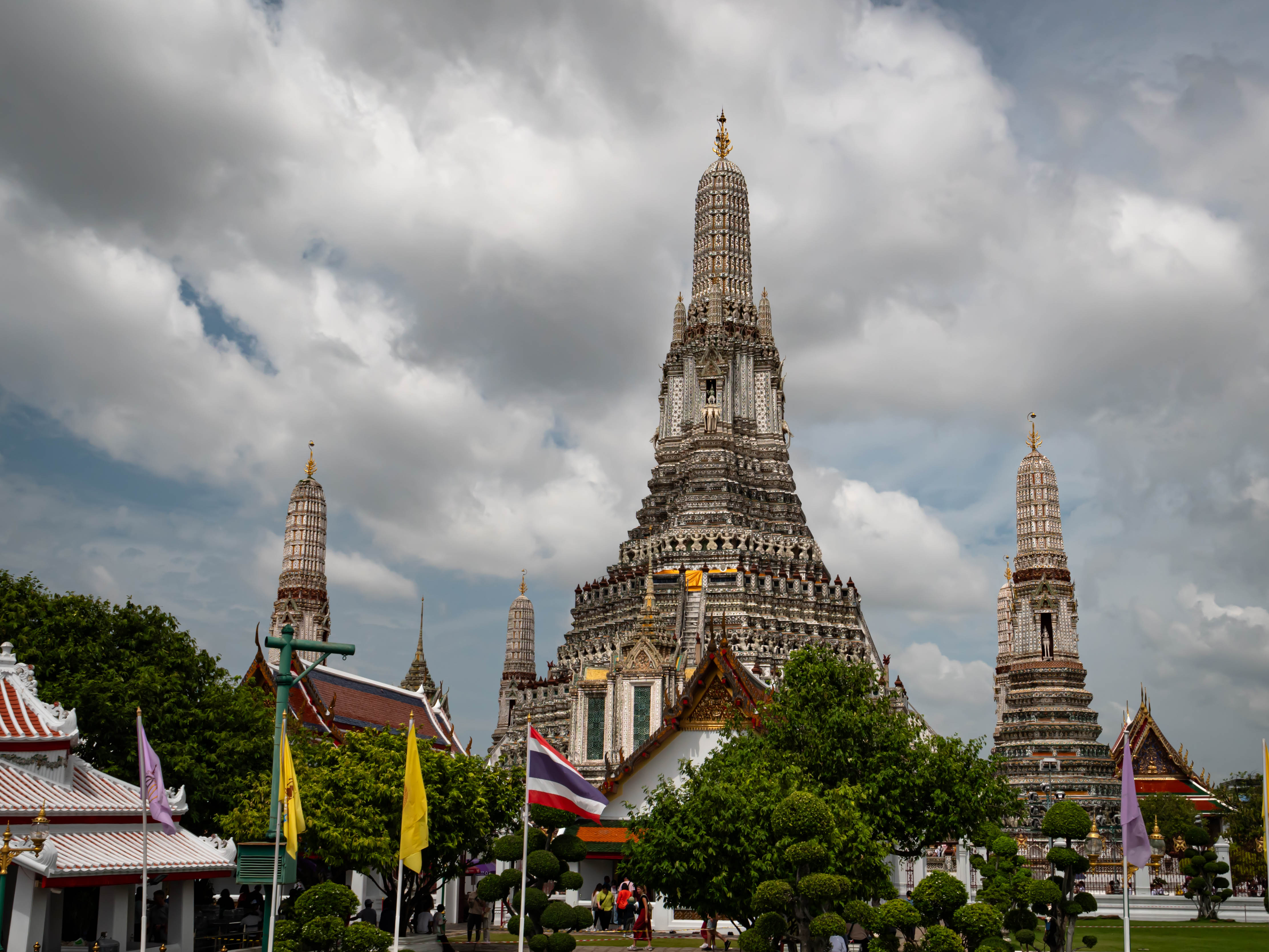Bangkok / Krungthep - กรุงเทพมหานคร
Bangkok is the capital of Thailand. It is crossed by the Chao Phraya River, which serves as a base for various transport methods within the city. The transport network is particularly well-developed here.
There is a huge amount to do. I was struck by how many people asked me why stay in Bangkok. The answer is simple: there are very beautiful hotels, countless restaurants, markets everywhere, street vendors all around, stores of all kinds, magnificent temples, the Grand Palace, Wat Pho, Wat Arun, and much more…
Bangkok
Bangkok (Krung Thep Maha Nakhon), the capital of Thailand, is a fascinating metropolis, both frenetic and spiritual. Skyscrapers, golden temples, floating markets, air-conditioned malls, and lively street food alleys coexist in a vibrant and contrasting blend.
A sprawling city
Bangkok spreads over more than 1,500 km². It is traversed by the Chao Phraya, the river of kings, whose banks concentrate much of the historical heritage:
- The Grand Palace and Wat Phra Kaew, home to the Emerald Buddha.
- Wat Pho, famous for its Reclining Buddha.
- Wat Arun, or the Temple of Dawn, magnificent at sunset.
Omnipresent street life
Every sidewalk in Bangkok is a world in itself:
- Food stalls, pad thai, skewers, sticky mango rice.
- Markets: Chatuchak (weekends), night markets, floating markets.
- Lively alleys: Chinatown, Soi Rambuttri, popular neighborhoods away from tourist routes.
Modernity and spirituality
Bangkok also features:
- Giant shopping centers (Siam Paragon, IconSiam),
- Design cafés, rooftops with views, contemporary museums (MOCA),
- But also living temples, frequented by locals.
The city maintains a strong connection to the sacred, in street altars as well as monasteries.
Transport and landmarks
- The Skytrain (BTS) and metro (MRT) serve main corridors.
- Boat taxis on the river to avoid traffic jams.
- Be prepared to walk… or wait in traffic.
Conclusion
Bangkok cannot be explained, it must be lived: through its sounds, smells, heat, and dense humanity. It is a city that never sleeps, rooted in tradition and looking to the future. An intense introduction to contemporary Thailand.
Wat Pho (วัดโพธิ์)
Wat Pho (วัดโพธิ์) or Wat Phra Chettuphon Wimon Mangkhalaram Ratchaworamahawihan (วัดพระเชตุพนวิมลมังคลารามราชวรมหาวิหาร) is the temple of the Reclining Buddha, representing Buddha on his deathbed.
Wat Pho, also known as the Temple of the Reclining Buddha, is one of the oldest and largest temples in Bangkok. Located near the Grand Palace, it is famous for its monumental statue of the reclining Buddha, 46 meters long and covered in gold leaf. The soles of its feet, inlaid with mother-of-pearl, illustrate the 108 auspicious signs of the Buddha.
The temple is also considered the birthplace of traditional Thai massage, recognized by UNESCO. An official school still trains practitioners today, and visitors can receive massages following ancestral techniques.
Rich with nearly a thousand Buddha images and magnificent ceramic-decorated stupas, Wat Pho embodies a balance between art, spirituality, and traditional medical knowledge. It is a place both calming and vibrant, ideal to visit early in the morning before the influx of visitors.
The soles of the Reclining Buddha’s feet
Wat Traimit
Wat Traimit, located in Bangkok’s Chinatown district, is world-famous for housing the largest solid gold Buddha statue ever discovered. This impressive statue, nearly 3 meters tall and weighing about 5.5 tons, is valued at several hundred million euros according to gold prices.
Long hidden beneath a stucco coating to protect it from plundering, the Buddha’s true nature was only accidentally revealed in the 1950s during a relocation. This national treasure, probably dating from the 13th or 14th century (Sukhothai kingdom), testifies to the artistic and spiritual wealth of ancient Thailand.
The temple itself, recently rebuilt in a modern Thai style, also includes a museum tracing the history of the statue and Bangkok’s Chinese community. Easily accessible from Hua Lamphong station, Wat Traimit is a must-see step to discover a unique facet of Thai Buddhist heritage.
The Grand Palace and Wat Phra Kaew
Located in Bangkok’s historic heart, the Grand Palace is one of the most visited and impressive sites in Thailand. Built in 1782 during the reign of Rama I, it served as the royal residence for over 150 years. Its refined architecture combines traditional Thai influences and Western inspirations, reflecting the reach of the Siamese monarchy.
The complex spans over 200,000 m² and houses numerous buildings, pavilions, and inner courtyards. The most famous among them is Wat Phra Kaew, or the Temple of the Emerald Buddha, which holds a sacred statue carved from a single jade block.
Still used for certain official ceremonies, the Grand Palace remains a major symbol of Thai history, spirituality, and identity. For visitors, its visit is a dive into the elegance and grandeur of royal culture.
Chao Phraya River
The Chao Phraya, often nicknamed “the River of Kings,” runs through Bangkok from north to south before emptying into the Gulf of Thailand. A vital artery of the capital, it is lined with majestic temples, bustling markets, modern skyscrapers, and historic neighborhoods.
Used for centuries for commerce and transportation, this river remains a central axis of urban life. Shuttle boats operate constantly, easing travel and offering a unique city view. Cruises also allow a more peaceful discovery of Bangkok, especially at sunset.
The Chao Phraya connects several emblematic sites including Wat Arun, the Grand Palace, and the Pak Khlong Talad flower market, making it an ideal thread to explore Thailand’s capital.
Wat Arun
Wat Arun, or the “Temple of Dawn,” is one of Bangkok’s most iconic monuments. Situated on the west bank of the Chao Phraya River, this Buddhist temple is distinguished by its immense central prang (Khmer-style tower) covered with porcelain and shell mosaics. About 70 meters high, it offers a spectacular city view from its upper terraces.
Originally built in the 17th century and expanded under King Rama II, Wat Arun symbolizes Mount Meru, the center of the universe in Buddhist cosmology. Contrary to its name, it is most impressive at sunset, when its facades take on a golden hue.
Accessible by ferry from the opposite shore, its visit combines refined architecture, spirituality, and exceptional urban panorama.
